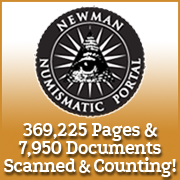
About UsThe Numismatic Bibliomania Society is a non-profit organization devoted to the study and enjoyment of numismatic literature. For more information please see our web site at coinbooks.org SubscriptionsThose wishing to become new E-Sylum subscribers (or wishing to Unsubscribe) can go to the following web page link MembershipThere is a membership application available on the web site Membership Application To join, print the application and return it with your check to the address printed on the application. Print/Digital membership is $40 to addresses in the U.S., and $75 elsewhere. A digital-only membership is available for $25. For those without web access, write to: Terry White, Treasurer
AsylumFor Asylum mailing address changes and other membership questions, contact Terry at this email address: terrywhite5475@yahoo.com SubmissionsTo submit items for publication in The E-Sylum, just Reply to this message, or write to the Editor at this address: whomren@gmail.com BUY THE BOOK BEFORE THE COINSale Calendar |
- WAYNE'S WORDS: THE E-SYLUM SEPTEMBER 11, 2016
- LAKE BOOKS 125TH SALE CLOSES SEPTEMBER 13, 2016
- AUCTIONES DUPLICATES OF THE BCD LIBRARY – PART 3
- STEVE HAYDEN OFFERS TOKEN BOOKS
- NEW BOOK: THE TOKEN BOOK 3 - TICKETS & PASSES
- NEW BOOK: 2017 NORTH AMERICAN COINS & PRICES
- NEW BOOKS IN THE MONETA SERIES: #195-196
- NEW BOOK: 2016 CANADIAN NUMISMATIC RESEARCH SOCIETY TRANSACTIONS
- NEW BOOK: SPANISH AND LATIN AMERICAN NUMISMATICS
- NEWMAN PORTAL PLANS BALTIMORE EXPO USER FORUM
- SCREENING THE TWO DOLLAR BILL DOCUMENTARY
- NOTES FROM E-SYLUM READERS: SEPTEMBER 11, 2016
- COIN BOARD NEWS NUMBER 40 PUBLISHED
- MORE ON THE BROWNING QUARTER PLATES
- ALEXANDER ZAIKA (1919-2016)
- DIKRAN GARABED KELEKIAN (1868-1951)
- JAMES EARLE AND LAURA GARDIN FRASER
- DAVID T. ALEXANDER ON ROBERT BASHLOW
- EXHIBIT: FOR THE LOVE OF MONEY
- EXHIBIT: RISE OF THE ART MEDAL
- EXHIBIT: BENJAMIN FRANKLIN PORTRAITS
- SELECTIONS FROM DAVE WNUCK'S SEPTEMBER 2016 INVENTORY
- THE GOLD CARD OF ALASKA
- ALASKA GOLD TOKENS: A TALE OF TWO CREEKS
- 2014 CENTRAL AMERICA TREASURE AWARDS TO RLP
- FRUIT OF THE LOOM CENTENNIAL MEDAL
- VIDEO: POLISHING 3D PRINTED BRONZE COINS
- AN ALCHEMY MEDAL
- INSIDE THE BANK OF ENGLAND'S VAULTS
- SECURITY FEATURES ON AUSTRALIA'S NEW BANKNOTE
- A CLOSE LOOK AT RUSSIAN BANKNOTES
- TRAIL OF BANKNOTES LEADS COPS TO CROOKS
- TRAIL OF PENNIES LEADS TO STOLEN DRUMFUL
- GORNY & MOSCH AUCTIONS 240-242
- FEATURED WEB PAGE: U.S. MINT'S SEPTEMBER 11TH MEDALS
Click here to access the complete archive
To comment or submit articles, reply to whomren@gmail.com
WAYNE'S WORDS: THE E-SYLUM SEPTEMBER 11, 2016
New subscribers this week include: Earl Guertin, and Milan. Welcome aboard! We now have 2,012 subscribers.
This week we open with a sale reminder from Fred Lake, a literature sale announcement from Auctiones GmBH, and some token book offerings from Steve Hayden. Next up are five new books and a Newman Portal User Forum.
Other topics this week include Dikran Kelekian, James Earle and Laura Gardin Fraser, Bob Bashlow, the Gold Card of Alaska, 3D printed coins, alchemy, careless crooks and Hägar the Numismatist.
To learn more about badges, tokens and passes, the Two Dollar Bill documentary, cent coinage in 1815, architectural medals, Russian Imperial Monograms, the Rise of the Art Medal, and the Museum Of UnCut Funk Collection, read on. Have a great week, everyone!
Wayne Homren
Editor, The E-Sylum
LAKE BOOKS 125TH SALE CLOSES SEPTEMBER 13, 2016
A reminder that Lake Books’ 125th mail-bid sale of numismatic literature closes on Tuesday, September 13, 20016 at 5:00 PM (EDT). The 489-lot sale may be viewed at http://www.lakebooks.com/current.html and bids may be placed via email, fax, or telephone. Bidding promises to be quite active with attention focusing on a long run of A.N.S. Numismatic Notes & Monographs, many lots of Ancient coinage reference books, United States coinage emissions, and studies on Paper Money, Treasure Hunting, Tokens & Medals, plus Miscellaneous works. Remember to bid early as ties are won by the earliest bid received. Good Luck with your bids.
Cordially, Fred
Lake Books
6822 22nd Ave N, PMB 118
St. Petersburg, FL 33710-3918
727-343-8055 fax: 727-381-6822
THE BOOK BAZARRE
AUCTIONES DUPLICATES OF THE BCD LIBRARY – PART 3
25 September 2016
Auctiones GmbH, Bern
Auction eAuction #51: Duplicates of the BCD Library
Book rarities of the Library of BCD – Part 3
246 lots comprising duplicates of the BCD Library will be offered for sale in the eAuction of Auctiones GmbH Bern on 25 September 2016. As is customary, the bibliophile discovers many rarities of ancient, most notably Greek, numismatics.
By now, it is the third time that the Bern-based Auctiones GmbH is able to offer duplicates of the BCD Library for auction sale. The range of offer comprises 246 lots of literature on ancient numismatics. They cover the following fields: numismatics in general (7 lots), Greek coins (57 lots), Roman provincial coins (3 lots), Roman coins (8 lots), and most of all rare auction sale catalogs, not only focusing on ancient numismatics (152 lots). Some journals round out the spectrum (18 lots).
The auction sale will be conducted on the internet at www.auctiones.ch. As of 12 September, all items can be viewed at this address. The auction proper will commence on 25 September, at 7 p.m.
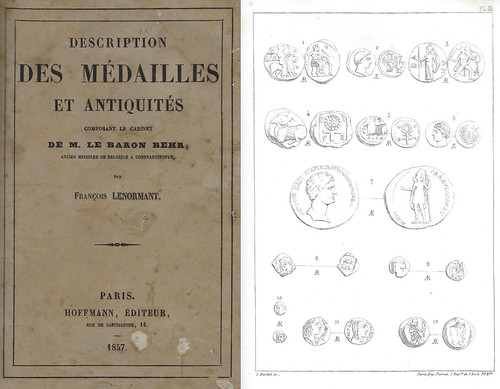
Lot 9
It is an attractive assortment that is being on offer. Important monographs, like the die corpus of Susanne Grunauer-von Hoerschelmann on the coinage of the Lakedaimonians or the 1924 and 1925 catalog of counterfeits struck by Becker can be found, supplemented by rare offprints and coveted Sylloges, for example the three volumes of the Lockett Collection, which BCD describes with the following matchless words: “One can never have enough of leafing through the Greek SNG Lockett. Especially when all parts are bound together, making it so much easier to move from one feast for the eyes to another. And to think that his collection of English coins was as important as his Greek! This writer once knew an elderly gentleman who, when he was very young, collected English Mediaeval pennies. He would call Lockett’s residence on several occasions in the late 40’s and ask if he could see his collection. Lockett would always invite him for afternoon tea and would receive him seated in his Winter garden. After tea was served, Lockett would ask him what he wanted to see and then he would say to his butler “James, can you please bring cabinet no. 14”. Those were the days…”
As you can see, the catalog in itself is a treat: The owner of the comprehensive BCD Library gives the potential buyer personal suggestions as to why one or two books are just the thing to add to your library. And it is very easy to become engrossed reading these highly subjective remarks.
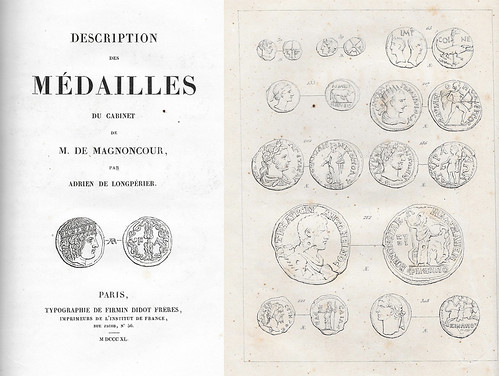
Lot 23
The auction catalogs are the segment for which BCD’s notes are especially helpful. For every single catalog he states the section from which the most important lots stem. That helps you decide which one of the 29 catalogs of the Bourgey company – the first published in 1909, the last dating from 2000 – will be the most valuable asset to your library. This offer includes the 1939 catalog covering a part of the Rue Mouffetard hoard, or the Henry Vernin Collection. Specifics about Vernin’s fate are given in a note of BCD’s: “According to the introduction by Mme. Bourgey, the owner of this collection apparently died in the auction room after he was the winning bidder on a Byzantine coin. What a way to go…” Another important, widely unknown publication is the auction catalog of Charles Dupriez from 1906, providing illustrations of wreathed tetradrachms of the Caiffa hoard in Syria. Which modern collector is still aware of the fact that the Dupriez auction house used to dominate the Belgian coin trade?
Of course, the names familiar to everybody can be found as well, like the collection of Mr. Theodor Prowe from Moscow and Photiades Pacha. And among the auction houses both familiar and unfamiliar names stand out: Bourgey, Ciani, Delaune, Dupriez, Egger, Feuardent, Hess-Leu, Hirsch, Hoffmann, Numismatica Wien, NFA, Ratto, Sambon, Schulman, Sternberg, and Vinchon.
As usual, the estimates are rather modest. It only takes 5 francs to join the bidding, although it is unlikely that a single lot can be bought at this low a calling price.
All those who have become curious can find the lots on the internet as of 12 September. Further details and the possibility to view the books are provided by Auctiones GmbH, P.O. Box 673, 3000 Bern 8, Switzerland; phone +41313113948, e-mail: info@auctiones.ch
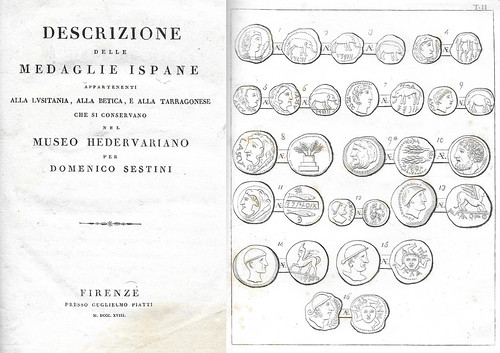
Lot 29
29 Domenico Sestini, Descrizione delle Medaglie Ispane appartenenti alla Lusitania, alla Betica, e alla Tarragonese che si Conservano nel Museo Hedervariano. Florence 1818. 4 volumes. Bound in full tan leather with brown spine letters. 227 pages. 10 pls. of engravings. Estimate: 100 CHF
A note from BCD: A rare book that will fascinate anyone interested in the ancient coinage of the Iberian Peninsula. Comparison of the
somewhat naïve and yet delightfully attractive etchings of the plates to today’s photographs of the corresponding coins may even hold some
unexpected surprises for the specialist. Sestini’s text should also not be dismissed outright under any circumstances; he was much more
knowledgeable and perceptive than most of his contemporary “numismatists”.
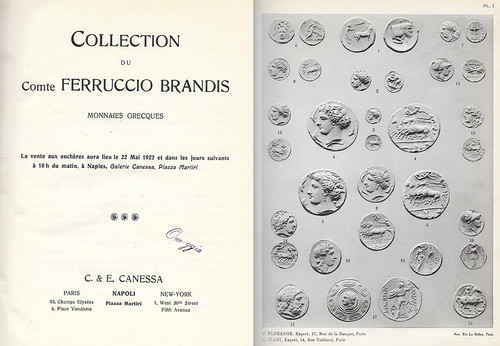
Lot 106
106 Auction catalog C. & E. Canessa, Neapel (22 May 1922). Collection du Comte Ferruccio Brandis. 466 lots, 21 pls. Bound with Jules Florange & Louis Ciani, Paris (28 May 1924). Catalogue des monnaies grecques et romaines, médailles artistiques françaises et étrangères composant la Collection de M. Georges Gallet. 238 lots, 30 pls. 4 volumes, gray-beige linen binding, leather spine labels with gilt letters. Estimate: 100 CHF
A note from BCD: Two scarce auction catalogues bound together in a fine binding of the 60’s. The first with the accent on Magna Graecia and the second displaying on fine plates some superb Greek and Roman as well as the important collection of artistic medals for which the collector is widely known.
136 Auction catalog H. Hoffmann, Paris (19 May 1890). Collection Photiades Pacha. Monnaie grecques. 1530 lots, 8 pls. With written hammer prices. Bound with H. Hoffmann (23-24 May, 1890). Collection Photiades Pacha. Monnaies byzantines. 682 lots, 2 pls. 4 volumes. Recent quarter gray leather binding with gilt spine letters. Estimate: 100 CHF
A note from BCD: Undoubtedly Hoffmann’s “Magnum Opus”. The only complaint one can have of this catalogue is that not every coin has been photographed. In the Greek series, the real rarities should be defined by how well they stand the test of time. A coin that was considered very rare in the 1890’s could well be much less rare today. Here, the star pieces of mainland Greece not only have maintained their rarity but one could say that they have become even more legendary. The plates are surprisingly free of the usual foxing and the Byzantine collection, of which the auction never materialized, is also present.
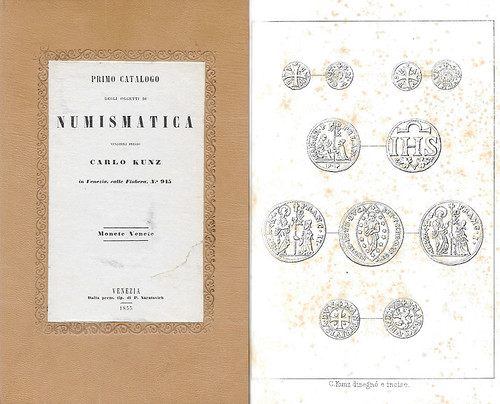
Lot 137
137 Auction catalog Carlo Kunz, Venedig (1855). 874 numbers, 45 pages, 1 pl. of copper engravings. Recent tan leather binding. Foxed. Estimate: 80 CHF
A note from BCD: This very rare booklet is the stock list of a local coin dealer and gives a glimpse of the coins of Venice available in the trade during the middle of the 19 th century. Although the recent full leather binding can be thought of as an extravagance, the opinion of this writer is that it was well worth the cost.
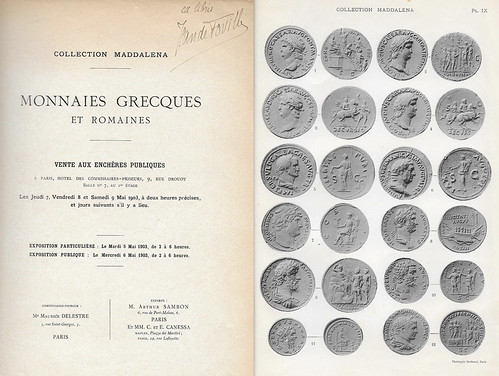
Lot 156
156 Auction catalog A. & C. Sambon & E. Canessa, Paris (7-9 May 1903). Collection Maddalena. Monnaies Grecques et Romaines. 1123 lots, 9 pls. 4 volumes. Recent half bound dark green leather, marbled boards, gilt spine letters. Interior with edges worn, some stains. Estimate: 50 CHF
A note from BCD: A well known and coveted catalogue of a collection that ranks amongst the finest of the period for Magna Graecia Greek coins and early Roman silver. Some of the sestertii are also impressive and one wishes there was double the number of plates so that more pedigrees could be discovered by the researcher. After the end of the coin descriptions there are tables of concordance between the coin numbers on the plates and the lot numbers. Rarity notes are also incorporated on these tables.
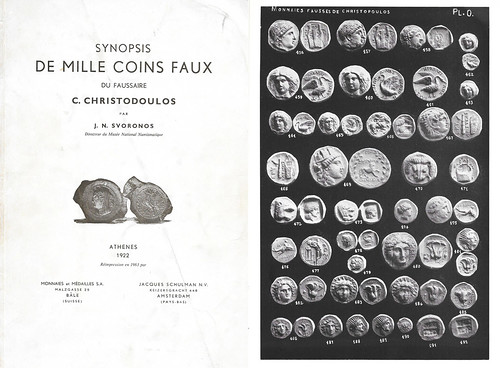
Lot 55
For more information, or to bid, see:
www.auctiones.ch
STEVE HAYDEN OFFERS TOKEN BOOKS
Books, Books and More Books
It was time to freshen up our book inventory. We had let some of our prior listings end and neglected to put up some new titles. The following are now available on Amazon, eBay and our site CivilWarTokens.com. Prices are usually best on our site, but feel free to shop where ever it is convenient.
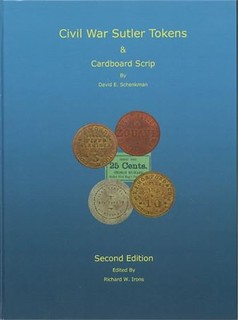 New Hard Times Token book by Dave Bowers with pricing.
New Hard Times Token book by Dave Bowers with pricing.
New Second Edition of the Civil War Token overview by Dave Bowers now with an overview of Sutlers.
New Second Edition of the Civil War Sutler book by Dave Schenkman all color with pricing.
New Third Edition of the Civil War Store Card book by the Fulds all color a must have.
Old Kanzinger Price Guide for Civil War tokens; outdated but still the only place to find a price on almost every Civil War token variety. Still good for relative comparisons and tracking price changes.
100 Greatest American Tokens and Medals by Jaeger and Bowers, a great gift for the collector and non collector alike.
Old Alpert's Charge Coin Catalog, his collection is now spread among current collectors but we still have a supply of the second printing.
The Guide Book of Tokens and Medals by Katherine Jaeger, a good overview of all this interesting stuff we like so much.
For more information or to order, see:
http://civilwartokens.com/Browse/C507238/Books
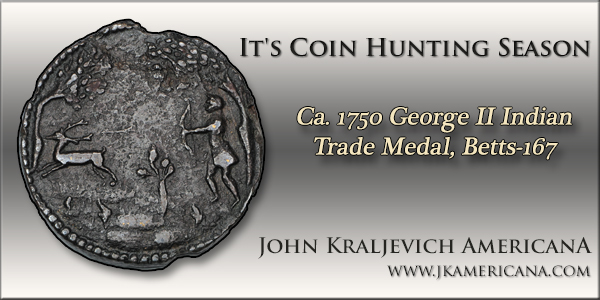
NEW BOOK: THE TOKEN BOOK 3 - TICKETS & PASSES
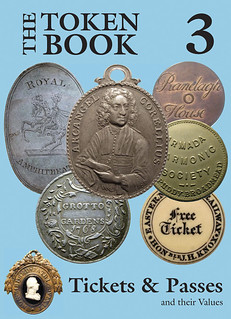 THE TOKEN BOOK 3 - Tickets & Passes, by Paul & Bente R Withers
THE TOKEN BOOK 3 - Tickets & Passes, by Paul & Bente R Withers
Size A4 (210 x 297mm, ca 8 x 12 inches). 432 pages. Price £130 plus postage.
This new work, which has been in preparation for over 20 years, is based on Tickets and Passes: struck or Engraved on Metal, Ivory, etc. for use at Theatres, Public Gardens, Shows, Exhibitions, Clubs, Societies, Schools and Colleges; also Truck Tickets, Colliery Checks, Railway Passes, Gambling, Lottery and Racing Tickets, etc., by W J Davis & A J Waters, which was delayed by the 1914-18 war and not published until 1922.
To make it better still, we have combined it with those items in the Montague Guest catalogue (Catalogue of the Montague Guest collection of Badges, Tokens and Passes presented in 1907 to the Department of British and mediaeval antiquities, British Museum. R A Smith, 1930) that were not already in D&W. It includes estimated values. The D&W original was printed in an edition of just 150 copies, and even the Spink 1974 reprint is now long out of print and so much in demand that US book dealers are asking 350 USD.
Much of the popularity of the D&W and MG catalogues was because they sometimes had information about the pieces, and/or the establishments that issued them, in what Davis and Waters called ‘Occasional Notes’. To make this new volume even more useful we have greatly increased the number, length and scope of the notes.
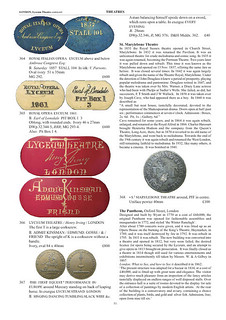
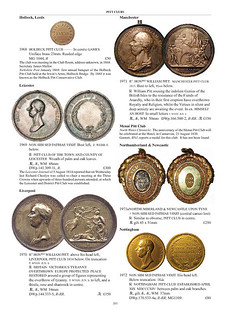
The new work has more than 3050 carefully-selected entries. Further, the original works have been corrected, expanded and, where possible, illustrated in colour, for over 2,600 of the listings. Valuations and/or rarity for the majority of the listings, which include :-
Theatres (66), Music halls (46), Touring Concerts (1), Theatre & cinema advertising (4), Charlie Chaplin (1), Good Luck Ringed Farthings (1), Shows and fairs (1), Circuses (4), Museums & exhibitions (11), Assembly rooms & ballrooms (3), Music & glee societies (9), Private parks (2), Private roads, piers etc., (3), Zoos (1), Gardens, grounds, lakes & bowling greens (38), Sports grounds, clubs & events (10), Archery & shooting (2), Cock fighting (1), Horse racing (7), Gambling, Anti-gambling (12), Lottery tickets (2), Caledonian, Celtic, druidical societies (3), Fraternal societies (1), Gentlemen’s & convivial clubs (4), Quasi-masonic (3), Birth-Night societies (1), Women’s clubs (1), Miscellaneous & unidentified clubs (10), Political (6), Elections (2), Pitt clubs (3), Loyal associations & Union Clubs, Jacobites (6), Amicable, benevolent, friendly, mutual benefit, sick, death & dividend societies (23), Foresters, Oddfellows, etc., (5), Building societies (1), Money societies (7), Life saving (2), Charities (1), Poor relief, dole & bread tickets (1), Soup & charity kitchens (2), Coffee houses (9), Temperance and Anti-tobacco (3) Hotels & restaurants (2), Anti-slavery (1), Religion & missionary (1), Death and cremation (1) Truck tickets & work tokens (11), Copperas tokens (1), Trade associations (1), Trade unions & societies (3), Working men’s clubs (1), Agriculture (2), Mechanics institutes etc. (1), Learned & literary societies (8), Medicine & hospitals (1), Boundary tokens (3), Utilities & corporations (2), Public & private baths & spas (3), Guild & company medals (1), London stock exchange (1), Libraries, police & fire service (3), Militias, etc., (1), Railways (13), Tramways (1), Ship, dock, bridge & ferry tickets (10), Shop tickets & private tokens (2), Sentimental Magazine tokens (1), Numismatic medals & tokens (15), Bibliography (1), Photo acknowledgements (2), Indexes (10)
The number in parentheses after each subject is the number of A4 pages in each section. Each section has been researched and the extra items in each section chosen so as to permit valuations and illustration of the subject.
Limited to 250 copies, and only available from Galata. www.galata.co.uk
Further details and sample pages are available on our website :
http://www.galata.co.uk/store.asp?storeAction=showDetail&stockID=8475

NEW BOOK: 2017 NORTH AMERICAN COINS & PRICES
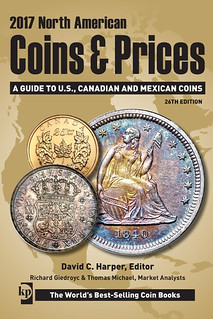 2017 North American Coins & Prices
2017 North American Coins & Prices
A Guide to U.S., Canadian and Mexican Coins
By David C. Harper, editor; Richard Giedroyc & Thomas Michael, market analysts
Format: Paperback
Featuring more than 50,000 individual coin listings, more than 6,100 photographs and updated coin prices for the United States, Canada and Mexico, 2017 North American Coins & Prices is the perfect single source reference for those passionate about the coins of our continent.
Organized by country, government, denomination and date of issue, this reference is a clear, detailed and easy-to-use resource for a vast array of coins.
The U.S. section offers listings for early Colonial coins and tokens of the 17th and 18th centuries through Federal issues from 1791 to date. The listings for Mexico begin in 1701 and flow chronologically through many government changes while Canada's listings begin with its earliest unified coinage in 1858 and continue through their many 21st century commemorative issues.
Inside you'll find:
- Pricing, descriptions and photos for coin issues of the United States, Canada and Mexico
- Improved chronological structure for Colonial America and Mexico War of Independence
- Graphs providing historical market performance of significant U.S. coins
- Expanded pricing grades for Canada and Mexico
For more than two and a half decades, North American Coins & Prices has provided unique, complete and authoritative information. Experience for yourself why this exceptional reference is the best guide of its kind on the market.
About the Author
David C. Harper, Iola, WI, is editor of Numismatic News, executive editor of World Coin News, and editor of U.S. Coin Digest. Harper has
more than 25 years of numismatic experience and has received numerous awards from the Numismatic Literary Guild.
Author/Speaker/Editor David C. Harper, editor; Richard Giedroyc & Thomas Michael, market analysts
Format Paperback
ISBN 13 9781440247095
Number Of Pages 744
For more information, or to order, see:
2017 North American Coins & Prices
(www.shopnumismaster.com/2017-north-american-coins-and-prices)
NEW BOOKS IN THE MONETA SERIES: #195-196
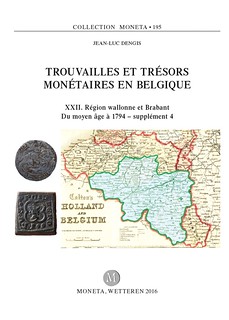
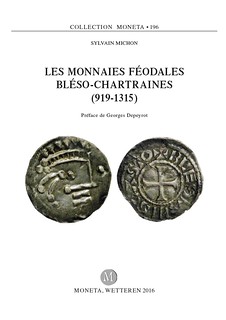
Moneta 195
J.-L. Dengis, Trouvailles et trésors monétaires en Belgique, XXII. Du moyen-âge à 1794, supplément 4, Wetteren, 2016, 214 p.
For more information, or to order, see:
Trouvailles et trésors monétaires en Belgique
(www.moneta.be/volumes/moneta_195.htm)
Moneta 196
S. Michon, Les monnaies féodales bléso-chartraines (919-1315), Collection Moneta, 196, Wetteren, 2016, 200 p., ISBN
978-94-91384-64-6
For more information, or to order, see:
Les monnaies féodales bléso-chartraines (919-1315)
(www.moneta.be/volumes/moneta_196.htm)

NEW BOOK: 2016 CANADIAN NUMISMATIC RESEARCH SOCIETY TRANSACTIONS
I'd like to make the readers of The E-Sylum aware of the Canadian Numismatic Research Society issue of the (New Series)
Transactions Volume 4 for 2016. The contents include: 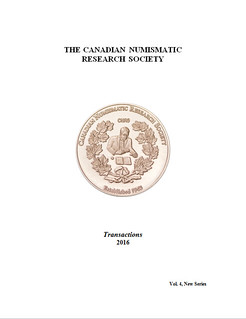
- A Guide for Contributors
- In Memoriam – Ralph Dickieson
- Rob Turner, Varieties of 1858 Specimen Quality Cents
- The Bank of England Countermarked Dollars
- William N Clarke. 1797 and 1804
- Henry Nienhuis, Edmé Henry and His Bank
- Scott E Douglas, Afterword
This year the Transactions is 70 pages, card covered and perfect bound. A few of my American friends requested cerlox comb binding last year and so I can make the Transactions available in that binding if desired. Shortly after the orders are assembled, as in the past, the edition will be mailed and that will be that. We do not plan on holding stock.
Again this year $5 of each sale will be donated equally between the Canadian Association For Numismatic Education (CAFNE) and the J D Ferguson Foundation.
To order your copy please send a cheque or money order payable to Scott Douglas for:
Canadian addresses (postpaid): $40 in Canadian funds or United States addresses (postpaid): $40 in US funds to:
Scott Douglas
273 Mill St. East
Acton, Ontario, Canada
L7J 1J7
Questions? Email Scott Douglas – sdouglas333@gmail.com
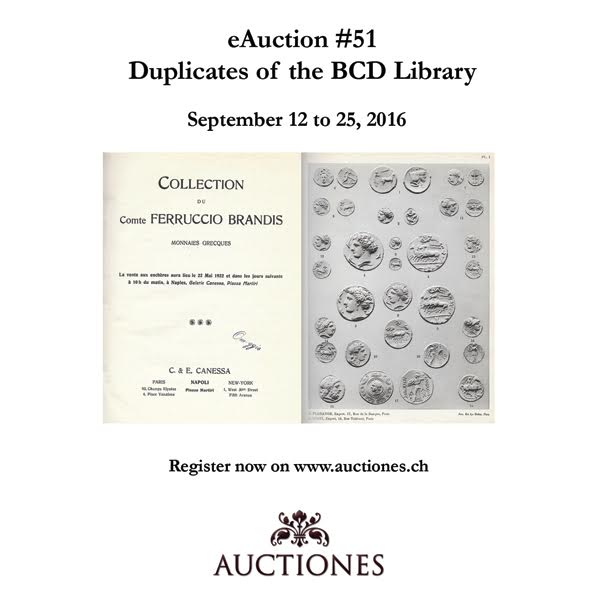
NEW BOOK: SPANISH AND LATIN AMERICAN NUMISMATICS
Author Antonio Roma writes:
I am a collector and also PhD in Numismatics from Spain. I have published several books and articles, the last one one on the numismatic books written in Spanish and Portuguese since XV c.
Even though the book is written in Spanish, I am sure English speakers can understand well. The book contains an analysis and an index of all books, many of them unknown in the Dekesel references.
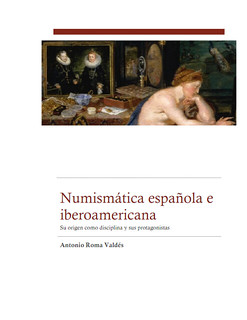 This book studies the numismatic orders and production, authors and scholars who have collected coins and medals, who have improved their
production. With reference to the conditions that have determined the ownership and transfer of cultural property and cultural ideas that have marked
trends in the collection and study chronologically expose the protagonists of numismatics in Spain, Portugal and Latin America since the end of s XV
to almost today. In the case of the authors, with expression and comment on their books and manuscripts. It is a return to classical ideas from the
Renaissance to the present, full of surprises.
This book studies the numismatic orders and production, authors and scholars who have collected coins and medals, who have improved their
production. With reference to the conditions that have determined the ownership and transfer of cultural property and cultural ideas that have marked
trends in the collection and study chronologically expose the protagonists of numismatics in Spain, Portugal and Latin America since the end of s XV
to almost today. In the case of the authors, with expression and comment on their books and manuscripts. It is a return to classical ideas from the
Renaissance to the present, full of surprises.
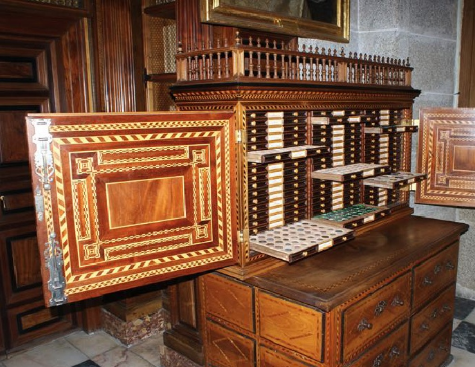
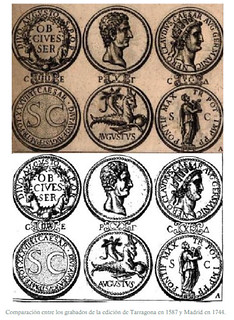
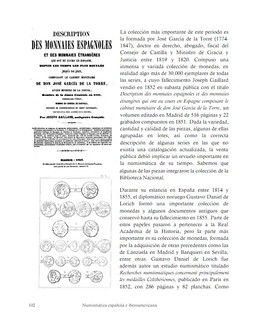
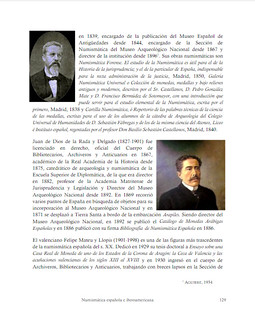
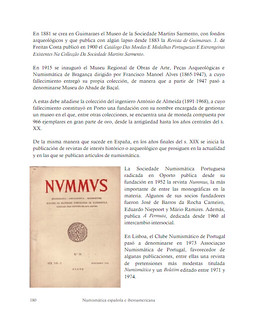
To download the book, see:
(https://morabetino.wordpress.com/2016/09/05/numismatica-espanola-e-iberoamericana/)
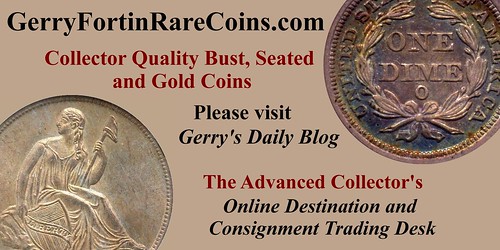
NEWMAN PORTAL PLANS BALTIMORE EXPO USER FORUM
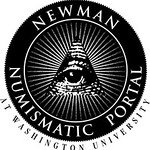 The Newman Numismatic Portal will conduct a user forum at the November 2016 Whitman Baltimore show, at the Pratt Street Ale House (across
from the convention center), on Friday, November 4, from 11am-1pm. Free lunch will be provided, but reservations are requested: please respond to
Newman Portal project coordinator Len Augsburger at leonard.augsburger@wustl.edu if you wish to attend.
The Newman Numismatic Portal will conduct a user forum at the November 2016 Whitman Baltimore show, at the Pratt Street Ale House (across
from the convention center), on Friday, November 4, from 11am-1pm. Free lunch will be provided, but reservations are requested: please respond to
Newman Portal project coordinator Len Augsburger at leonard.augsburger@wustl.edu if you wish to attend.
This will be an interactive session; attendees are urged to bring their laptops and research problems. Wifi will be available. We will do a deep dive into the Newman Portal resources and offer suggestions on how to progress research issues. This will also serve as an opportunity to informally network with numismatic authors and researchers, but you need not be either to attend.
To visit the Newman Numismatic Portal, see:
www.newmanportal.org
SCREENING THE TWO DOLLAR BILL DOCUMENTARY

John Bennardo saw our article on The Two Dollar Bill Documentary. He writes:
I am the Producer/Director of The Two Dollar Bill Documentary, and I came across the article in The E-Sylum about the film. Thank you for discovering it and sharing this info with your readers.
Your suggestion about screening the film at coin & currency shows is a good one - I have been looking to get the film more awareness for these audiences. I also am selling DVDs now, as you may have seen on the website: www.2dollarbillmovie.com. The discount code of 2foryou will take $2 (of course) off the price.
The film has a been a big success everywhere it's played, and your readers would especially love the film. I hope through your article they discover it and get a chance to see it somehow.
John adds:
I would love for groups big and small to contact me if they want to host some kind of event. I can participate by Skyping in for a Q&A or perhaps even doing a live appearance where I give away autographed posters, DVD copies, bicentennial $2 bills, etc. I'd love to go to shows and host screenings there (part of the film was shot at FUN in Orlando and I've been trying to get an event there where the film can screen for guests, have me there, etc).
The film is for everyone but of course is a big hit with collectors, so I'm very open to ways to get it out there. I think a show that hosted a screening would have a terrific, unique event. I can discuss fees or revenue-sharing opportunities with shows individually if they are interested. It may be something event planners would really like to know about.
To read the earlier E-Sylum article, see:
THE TWO DOLLAR BILL DOCUMENTARY (www.coinbooks.org/esylum_v19n36a19.html)
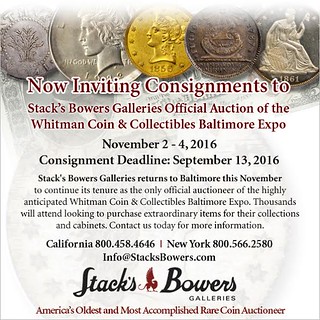
NOTES FROM E-SYLUM READERS: SEPTEMBER 11, 2016
On The E-Sylum's 19th Anniversary
Dick Johnson writes:
Congrats on The E-Sylum’s 19th Anniversary! Wayne, you are a publishing marvel. I cannot imagine that much dedication to a single project for that length of time. Every week you gather that much significant -- and interesting! – material you put on the internet. Monday mornings are a delight to read brief articles of scholarly numismatic information. You are making all of we readers better numismatists. Center stage, take a bow.
To read the earlier E-Sylum article, see:
WAYNE'S WORDS: THE E-SYLUM SEPTEMBER 4, 2016
(www.coinbooks.org/esylum_v19n36a01.html)
R.W. Julian: Cent Coinage Resumed in 1815
R.W. Julian writes:
In The E–Sylum for September 4, 2016, Bill Eckberg has a note indicating that only half eagles and quarter dollars were struck in 1815. He claims that cents were not struck in 1815 despite the mint director stating just that in his annual report. The following points apply:
1) Mr. Eckberg claims that Mint Director Robert Patterson was lying when he stated that copper coinage had resumed. Eckberg, however, does not produce any good reason for this claim except to state that the director was engaged in “bureaucratic butt-covering.”
2) There is supporting evidence for Patterson’s remark, both circumstantial and definitive. The planchets received from Matthew R. Boulton were in the Mint by December 11, 1815, and Eckberg would have us believe that nothing was done with them for several weeks even though the coining of cents would have kept the workers busy.
3) On December 27, 1815, Patterson wrote Boulton acknowledging receipt of the planchets but pointing out some problems that needed to be corrected in the next shipment. These imperfections in the planchets could only have been noticed during actual coining operations. The director in particular mentioned that the quality of the struck pieces was affected by the imperfections.
4) It is worth noting that the December 27 letter was published in the 1991 ANA Anthology, a readily available source. One has to wonder why Eckberg does not mention the 1991 article or the December 27 letter in his February 2015 Coin World and July 2015 Penny-Wise articles.
5) It may therefore be stated, with absolute certainty, that cent coinage did resume in December 1815 as reported by the director. The number struck that month, however, is unknown and likely to remain so barring the discovery of additional documentation.
To read the earlier E-Sylum article, see:
ONLY QUARTERS AND HALF EAGLES COINED IN 1815
(www.coinbooks.org/esylum_v19n36a16.html)
Schook on Books
In her message in the November 1986 issue of The Numismatist President Florence M. Schook told how to increase enjoyment of numismatics:
The Duchess of Windsor maintained that ‘You can never be too rich or too thin,’ though few people I know can lay claim to both. Thus, I’d like to modify that expression to make it more applicable to the topic of this message: “You can never have too many books or read too much.” My predecessor, Dave Bowers, believed that knowledge is power and urged every collector to build a personal numismatic library. Sound advice, particularly in light of the tumultuous goings-on in our hobby.
If people would put down their Grey Sheets and pick up a good book, such as Bowers’ Adventures with Rare Coins or The Fantastic 1804 Dollar by Eric Newman and Ken Bressett, I guarantee that more folks would become collectors rather than just investors. The lure of coins and collecting is heightened by a sense of history, something that isn’t sold with a coin.
Books are the key to understanding the wonderful attraction of our hobby. For example, to the well-read collector, a 1783 Nova Constellatio copper is much more than a worn, old coin—it represents America’s first attempt to establish a standard unit of coinage. Likewise, much more attractive than the value of a $20 Saint-Gaudens gold piece is the fascinating story of its talented designer.
Building a reference library can be a costly project, though the investment is small compared to what many spend on assembling their portfolios. For those of you on a tight budget, the ANA’s Reference-Book-of-the-Month Club is a good way to add to your library. Each month members are offered the opportunity to purchase instructional, entertaining volumes at substantially reduced prices. There is no obligation to buy nor do you receive unwanted books in the mail simply because you forgot to return the ‘No Thank You’ card. To place your name on the Reference-Book-of-the-Month Club mailing list, write to the ANA.
If you’re not quite ready to start assembling your numismatic library, you can still enjoy the wealth of literature available to you through the ANA Library. Members may borrow books on every conceivable numismatic topic without charge other than the cost of postage and insurance.
To read Dave's ongoing article series, see:
125 Years of Collecting with the American Numismatic Association
(https://www.money.org/125yearsofcollecting)
The Future of Numismatic Literature
Regarding The Asylum special issues on The Future of Numismatic Literature, Dave Bowers writes:
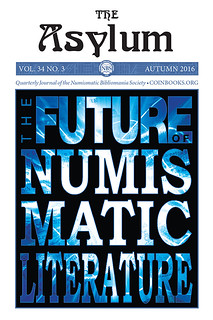 I can hardly wait to see the hard copy of the magazine. I think my library of directories and standard references on American history is
worth a fraction of what I paid. And what to do with microfiche files (a flash in the pan innovation) and all of the microfilms I have of Gold Rush
newspapers and other periodicals? However, I did get a heck of a lot of use out of most of these.
I can hardly wait to see the hard copy of the magazine. I think my library of directories and standard references on American history is
worth a fraction of what I paid. And what to do with microfiche files (a flash in the pan innovation) and all of the microfilms I have of Gold Rush
newspapers and other periodicals? However, I did get a heck of a lot of use out of most of these.
I still enjoy, and immensely, the feel of holding a hardcover. My American Numismatical Manual, 1859, or my latest Guide Book won’t be replaced by digital versions anytime soon.
My grandson Matthew Bowers is a freshman at Columbia University. Assignments for summer reading were the Odyssey and the Iliad. I have never read these, so will start soon. Ten years ago I would have bought hard copies. Now, I will see what Google Books offers—and at no cost.
To read the earlier E-Sylum article, see:
ASYLUM AUTUMN 2016 ISSUE PUBLISHED
(www.coinbooks.org/esylum_v19n36a02.html)
Working at First Coinvestors
Mel Wacks writes:
The article about Stanley Apfelbaum's numismatic course was of special interest to me. My first job in numismatics was at his First Coinvestor company, where I worked with Herb Melnik, Walter Breen et al. I enjoyed listening to Ed Rochette's lectures on the History of Medals. Ed is a great guy and a great numismatist
To read the earlier E-Sylum article, see:
NEWMAN PORTAL DIGITIZES APFELBAUM RARE COIN COURSE
(www.coinbooks.org/esylum_v19n36a11.html)
Moe Berg Jewish-American Hall of Fame Medal
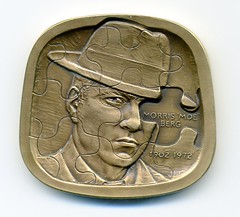
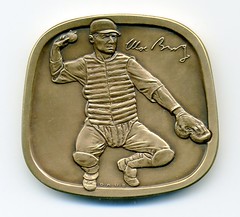
Mel Wacks adds:
I just wanted to add that there is definitely a numismatic connection with Moe Berg. In 2006, Moe Berg was inducted into the Jewish-American Hall of Fame; his medal was the first of nine designed thus far by Eugene Daub for the series. Pictures are attached.
Jeff Starck of Coin World writes:
I enjoyed reading Dick Johnson’s story about Moe Berg’s library in the latest E-Sylum. How has no one mentioned the Jewish-American Hall of Fame medal honoring this famous mensch?
It is one of my favorite medals from the series, about which Coin World regularly reports. Here are two stories that reference the Berg medal in particular.
To read the Coin World articles, see:
Jewish-American Hall of Fame
medals long-running series (www.coinworld.com/news/us-coins/2012/07/jewish-american-hall-of-fame-medals-long-runn.html#)
(www.coinworld.com/news/us-coins/2014/04/hank-greenberg-and-moe-berg-jahf-medal.html#) Jewish-American Hall of Fame medals celebrate
baseball players Hank Greenberg and Moe Berg
To read the earlier E-Sylum article, see:
A NUMISMATIC CONNECTION TO MOE BERG
(www.coinbooks.org/esylum_v19n36a26.html)
More On Coin Thickness
Steve Bishop writes:
If I'm not mistaken, the "late 1790's kopeck" from Gary Beals you showed may actually be a 5 kopeck piece. I don't know how the value of 1 or 5 kopecks compares to a groat (4 pence), but he should compare apples to apples. Also, since I believe the groat is silver and the kopcek is copper, that would explain the difference in thickness.
Certainly, the 5 kopeck piece from eighteenth century Russia is one of the more massive copper coins around, although it is surpassed by the Siberian 10 kopecks, and of course the Sestroretsk ruble, which weighed in at 1 kilogram and measured 3 inches in diameter and 1 inch thick. Then there is the Swedish 10 daler plate which weighs in at 20 kg.
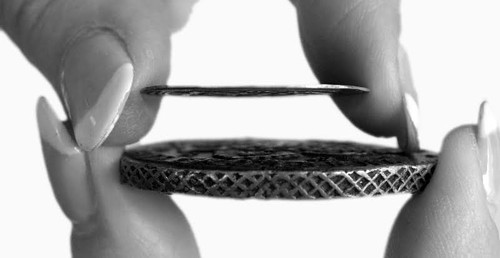
To read the earlier E-Sylum article, see:
NOTES FROM E-SYLUM READERS: SEPTEMBER 4, 2016 : On Coin Thickness
(www.coinbooks.org/esylum_v19n36a15.html)
Russian Imperial Monograms
Regarding Darryl Atchison's note on the similarity of Russian coppers and the British Anglesey pieces, Steve Bishop adds:
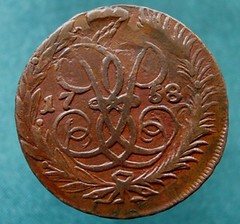 The style of the monogram is similar, but it is typical of the style of imperial monograms used by Russian empresses Elizabeth and
Catherine II. The 1758 date is correct; it was the first year of Elizabeth's reign.
The style of the monogram is similar, but it is typical of the style of imperial monograms used by Russian empresses Elizabeth and
Catherine II. The 1758 date is correct; it was the first year of Elizabeth's reign.
To read the earlier E-Sylum articles, see:
NOTES FROM E-SYLUM READERS: AUGUST 28, 2016 : Steve Bishop's Russian
Coppers (www.coinbooks.org/esylum_v19n35a14.html)
RUSSIAN COPPER COINAGE AND THE SOHO MINT
(www.coinbooks.org/esylum_v19n36a29.html)
Hägar the Numismatist

For more Hagar the Horrible cartoons, see:
http://hagarthehorrible.com/

COIN BOARD NEWS NUMBER 40 PUBLISHED
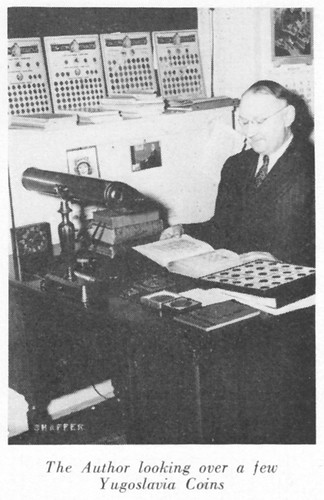 VINTAGE COIN BOARD SIGHTINGS I’ve come across two more appearances of coin boards in old photos published within The E-Sylum,
the online newsletter of the Numismatic Bibliomania Society (www.coinbooks.org), and these are included with this issue of CBN. The first shows coin
dealer William A. Gaede of the Pittsburgh Coin Exchange in a photo that originally ran in the May 1941 issue of The Hobbyist. On a shelf to
his right are four Colonial Coin and Stamp Company boards.
VINTAGE COIN BOARD SIGHTINGS I’ve come across two more appearances of coin boards in old photos published within The E-Sylum,
the online newsletter of the Numismatic Bibliomania Society (www.coinbooks.org), and these are included with this issue of CBN. The first shows coin
dealer William A. Gaede of the Pittsburgh Coin Exchange in a photo that originally ran in the May 1941 issue of The Hobbyist. On a shelf to
his right are four Colonial Coin and Stamp Company boards.
In the second photo, which dates to about 1979, Robert W. Cornerly poses behind his desk at Rare Coins of Georgia in Atlanta. On that
desk is another CC&S board that is just barely identifiable as Eagle/Indian Cent board C1¢A2b. Here’s a link to The E-Sylum article:
http://www.coinbooks.org/
esylum_v19n32a16.html. If you’re not reading this weekly newsletter you’re really missing out on the heart and soul of numismatic
literary research and gossip.
RESEARCHING COIN BOARDS, FOLDERS AND ALBUMS Since there’s almost nothing on these subjects published, aside from my own books and newsletters, attempting to learn more can be challenging. The recent arrival of easily searchable archives such as those of the Newman Numismatic Portal (https://nnp.wustl.edu) and the American Numismatic Association’s journal, The Numismatist (https://money.org), does help considerably. Still, I have to do a lot of digging the Old School way by buying and reading vintage coin company catalogs and coin hobby guidebooks. These are time capsules into what coin storage products were available, who published them and how much they cost when new. This has proved to be more necessary in researching coin folders and albums than it was with coin boards, as the latter were in production for such a short time.
I’ve amassed quite a library of little paperback books of the sort that other collectors of numismatic literature disdain. For example, I came back from this year’s incarnation of the annual ANA book sale with a carton full of old catalogs that were purchased at 25 cents apiece from the “no one cares” pile. This hoard included long runs of the annual catalogs put out by Bebee’s in Omaha and Tatham Stamp and Coin Company in Springfield, Massachusetts. Both always featured coin holders and other supplies and have proved to be the richest sources of detailed information. For example, the 1940 Tatham catalog included a full-page ad for Whitman’s Third Edition coin boards, though that company’s name was not mentioned. This ad is reproduced herein, along with a vintage postal cover from the company dating from the 1920s that I recently acquired.
For more information, see:
www.coincollectingboards.com/
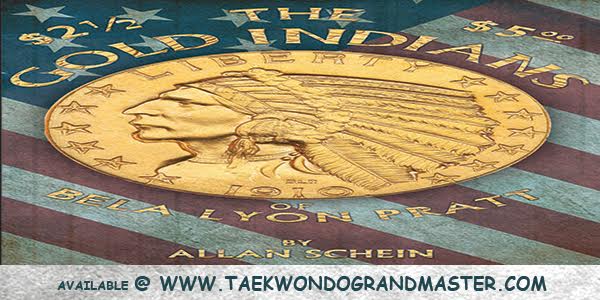
MORE ON THE BROWNING QUARTER PLATES
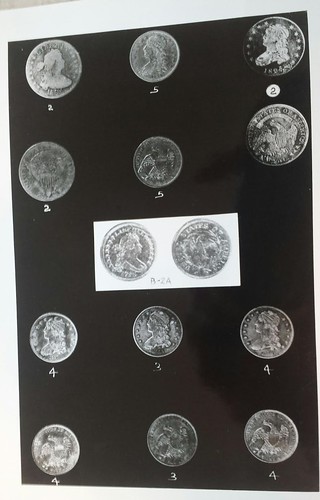 Regarding the question from Mike Paradis on the photographic plates for the Browning book on early U.S. quarters, Dan Hamelberg writes:
Regarding the question from Mike Paradis on the photographic plates for the Browning book on early U.S. quarters, Dan Hamelberg writes:
I have the original glass negatives and the size is 8 x 10. The deluxe Kolbe reprint (25 made) has 8 x 10 plates made from the original negatives. I have two original copies of Browning (one inscribed by Browning to Max Mehl), a deluxe Browning copy, and a Ford copy, and the plates are trimmed in all to 6 1/2 x 9. None of the books or the original plates (plate #8) contain an additional image featuring a coin labeled B-2A.
Also, there is no written reference in the text to a coin B-2A for the design indicated. The extra image must have been added at a later date since they are not contained in the original glass negatives. It might be helpful to compare the plates that Mike Paradis has to a set of originals to determine if there is any significant clarity difference. Also, a paper comparison might be helpful. Very interesting.
To read the earlier E-Sylum article, see:
QUERY: BROWNING QUARTER PLATES INFORMATION SOUGHT
(www.coinbooks.org/esylum_v19n32a18.html)
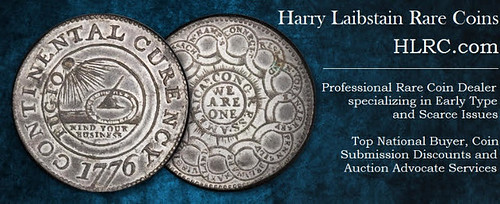
ALEXANDER ZAIKA (1919-2016)
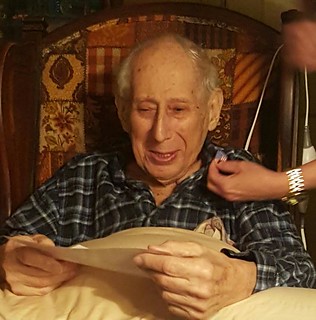 Alexander Zaika, the founding president of the New Jersey Exonumia Society in 1980 and the editor of its journal, Jerseyana, for
many years,died September 3, 2016, at the age of 97.
Alexander Zaika, the founding president of the New Jersey Exonumia Society in 1980 and the editor of its journal, Jerseyana, for
many years,died September 3, 2016, at the age of 97.
Al was well known as a collector of, and part time dealer in, a variety of tokens, medals and paper scrip, especially those of New Jersey about which he published numerous articles and developed catalog listings. In addition to his presidential and editorial posts with NJES, he served as its treasurer and filled several positions on a pro tempore basis when they became vacant and until a successor took over. NJES folded in 2011, victim of a declining and aging membership.
Tall and friendly, Al was a familiar figure at the annual shows of the Garden State Numismatic Association, of which NJES was a member club. At his table he displayed large, chock-full binders of tokens and medals organized by type, such as bank tokens, coal scrip and merchant good-fors. His wife Betty, who died in 1998, usually accompanied him to the shows and helped with setting them up. In later years Al suffered from progressive macular degeneration which weakened his vision, making show attendance difficult and requiring him to sell his collections of mostly New Jersey material. Close friends kept in touch with him, as did his family.
Al lived in Bellmawr, Camden County, New Jersey, and was retired from a career as a conductor and brakeman with the former Reading Railroad. In the 1930s he worked for the Civilian Conservation Corps building public works projects in the state of Nevada.
During World War II, he served on active duty in the 623 rd Ordnance Ammunition Company of the U. S. Army in the Pacific theater, with the rank of Technical Sergeant. He earned a Good Conduct medal, a Philippines Liberation ribbon with one bronze star, an American Defense Service medal, an American Campaign medal and an Asiatic Pacific Campaign medal with three bronze stars.
Contributions in memory of Al may be made to Happy Someday, a charitable organization helping autistic children, at 14011 Park Drive, Suite 211, Tomball, TX. 77377.
DIKRAN GARABED KELEKIAN (1868-1951)
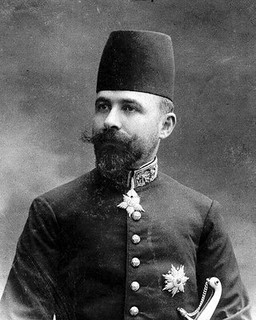
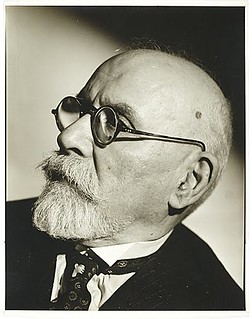
Dikran G. Kelekian circa 1893 and 1938
Dikran Garabed Kelekian (1868-1951), art, antiquities and coin collector and dealer. He was born December 31, 1868, in Caesarea, Turkey, son of an Armenian banker from Kayseri (Caesarea), Turkey.
He appears to have begun his career somehow involved in the archaeological excavations of medieval Persian ceramics south of Tehran at Rayy (Rhey), probably at the time of the British archaeologist George Nathaniel Curzon (1859-1925), between 1889-1890.
He and his brother Havannes (Turkish, Kevork) opened a shop in Istanbul, Turkey around 1890. In 1892, the government appointed him Commissioner of the Persian Pavilion at the World Columbian Exposition, Chicago, Illinois. En route to America he and his brother Havannes opened shop at London sometime around the winter of 1892. He left Liverpool, England sailing on the SS Campania in April 1893 and arrived in New York city where he remained becoming a Naturalized U. S. citizen on May 10, 1893.
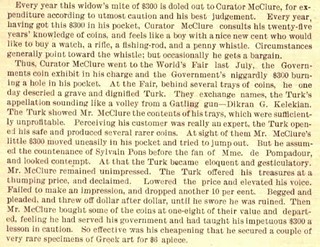 He arrived in Chicago about mid November 1893. Eight months later he met Robert A. McClure, Curator of the Cabinet of the United States
Mint. [There is a] tongue-in-cheek report by a Philadelphia journalist of McClure's meeting with Kelekian at the Chicago World's Fair.
The Philadelphia Telegraph, June 15, 1894, reprinted in The Pottsville Review, June 16, 1894 and also in The Numismatist,
August (1894) : 159.
He arrived in Chicago about mid November 1893. Eight months later he met Robert A. McClure, Curator of the Cabinet of the United States
Mint. [There is a] tongue-in-cheek report by a Philadelphia journalist of McClure's meeting with Kelekian at the Chicago World's Fair.
The Philadelphia Telegraph, June 15, 1894, reprinted in The Pottsville Review, June 16, 1894 and also in The Numismatist,
August (1894) : 159.
He opened shop at 303 Fifth Avenue, New York, New York about January 1896. There he and his brother sold art, antiquities and ancient coins and served as agents for buyers including at auctions. He became a correspondent with the Chapman Brothers and served as a supplier for Greek and Roman coins for their patrons.
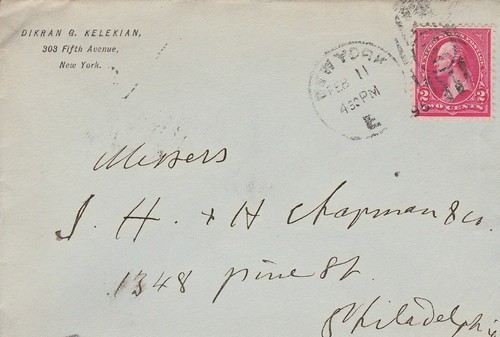
In the Summer of 1896 the Ottoman rulers of Turkey experienced political disturbances and tensions surmounted. Kelekian served as the secretary of ex-Patriarch Izmirlian in Istanbul, Turkey. In September 1896 Kelekian was forced out of Istanbul, since he was harassed by police who continuously followed him throughout the city. He opened shop with his brother Kevork at Paris, France. Shortly afterwards he published political essays in French on the political solution to the crisis in Turkey opting to use the Austro-Hungarian Constitution to relinquish the meddling of the affairs of state by the Sultan and give the citizens a greater say in matters.
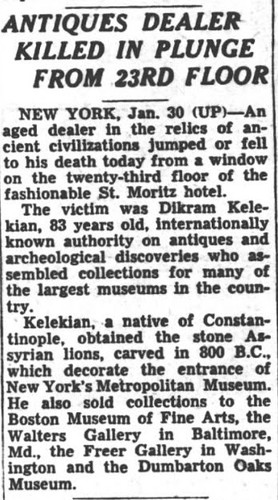 In 1904, he exhibited antiquities and rare coins at the Saint Louis Exposition and traded foreign and ancient coins with Farran Zerbe.
In 1904, he exhibited antiquities and rare coins at the Saint Louis Exposition and traded foreign and ancient coins with Farran Zerbe.
In 1909 he help found the Armenian General Benevolent Union serving on the Board of Directors and also an orphanage named Dikran Kelekian in the Turkish city of Deort Yol.
By about 1910 he moved his shop to 709 Fifth Avenue, New York.
By about 1930 he moved his shop to the second floor, 598 Madison Avenue, New York.
On December 30, 1936 he was married at Manhattan, New York.
By about 1940 he moved his shop to 20 East 57th Street, New York.
He died from a fatal fall from the twenty-third floor of the St. Moritz Hotel in New York City on January 30, 1951.
To read the complete article, see:
KELEKIAN, DIKRAN GARABED
(https://sites.google.com/a/numismaticmall.com
/www/numismaticmall-com/kelekian-dikran-gar)
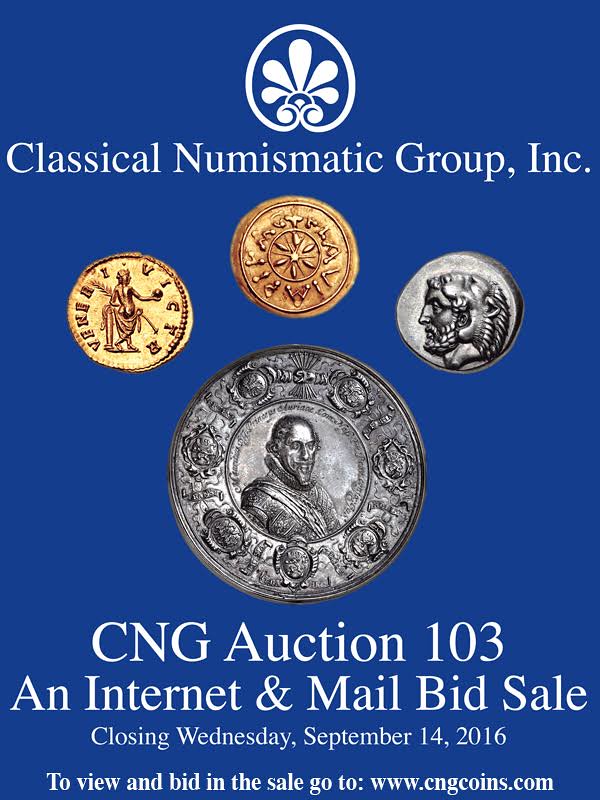
JAMES EARLE AND LAURA GARDIN FRASER
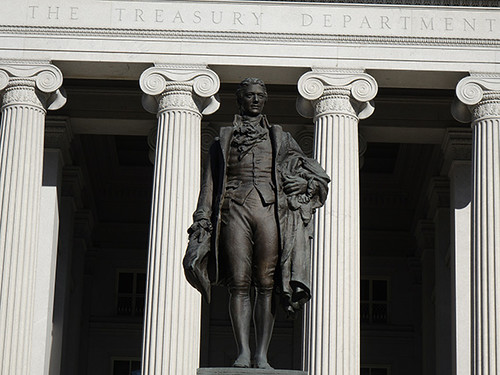
Did you know? The same artist sculpted the statue of Alexander Hamilton in front of the U.S. Treasury building in Washington, D.C., and the Buffalo Nickel first introduced in 1913. Did you know, also, that this artist's wife designed the first commemorative coin produced by the Denver Mint two decades later?
James Earle Fraser and his wife Laura Gardin Fraser were prolific American artists during the first half of the 20th Century.
According to Syracuse University—which houses 40 boxes of the Frasers' records, including designs, reproductions and memorabilia—James made considerable contributions to the history of American art by fulfilling commissions for the U.S. Treasury, U.S. Navy, National Archives, U.S. Department of Commerce and U.S. Supreme Court.
As a child, James followed his father (a railroad engineer and contractor) to South Dakota in 1877. Fraser's time on the prairies during America's westward expansion inspired much of his later art, such as the famous End of the Trail sculpture.
The National Cowboy and Western Heritage Museum says this about Fraser's upbringing in the Dakotas:
“There [Fraser] had unique encounters with pioneers, hunters and fur trappers, and he befriended many of the Plains Natives. He … sympathized with their suffering as westward expansion threatened to consume their lands. The experience of watching a young man in Mitchell carve chalkstone into different forms encouraged Fraser to begin sculpting. He later acknowledged that this significantly influenced his art career.”
James is connected to the history of the Mint in ways other than just the Buffalo Nickel, though, as he worked for years with famed sculptor Augustus Saint-Gaudens.
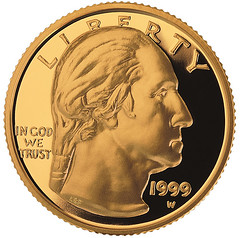 Laura Gardin Fraser, who was an art student studying under James before they married, was a successful sculptor in her own right. She
sculpted coins, medals and statues for the United States military, the National Geographic Society and the city of Baltimore. For the Mint, Laura
designed a variety of products besides the Oregon Trail coin, including the 1921 Alabama Centennial, 1922 Grant Centennial and the 1930 Charles
Lindberg Congressional Gold Medal.
Laura Gardin Fraser, who was an art student studying under James before they married, was a successful sculptor in her own right. She
sculpted coins, medals and statues for the United States military, the National Geographic Society and the city of Baltimore. For the Mint, Laura
designed a variety of products besides the Oregon Trail coin, including the 1921 Alabama Centennial, 1922 Grant Centennial and the 1930 Charles
Lindberg Congressional Gold Medal.
Photo caption: Laura Fraser created this design of George Washington in 1931, though it was not used by the Mint until 1999.
The Extraordinary Frasers (www.usmint.gov/pressroom/insidethemint/index.cfm?action=extraordinary-frasers)

DAVID T. ALEXANDER ON ROBERT BASHLOW
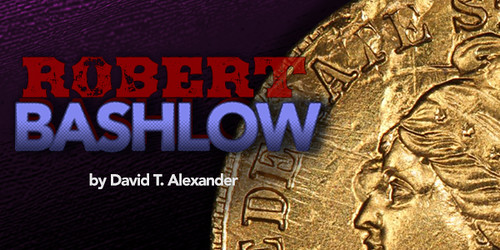
Bashlow’s early career as a professional numismatist blossomed in the heyday of the 1955 Double Date Lincoln cent, a marvelous Philadelphia Mint product that featured boldly doubled digits in the date and doubled lettering in the obverse legend. Apparently 20,000 to 24,000 examples were struck with this bungled obverse die and were mixed in with 10 million cents awaiting packaging and release into circulation.
After this variety was discovered and publicized, its value skyrocketed. Fast-moving dealers bought and sold Double Date pieces at several points during their dramatic rise in an overheated coin market. Fortunes were made, and the young Bashlow racked up hefty profits.
In the next phase of his career, Bashlow worked with wholesale dealer David Laties in importing and mass-marketing several types of modern British bronze coins to American collectors. Bashlow’s name became associated with such companies as White Oak Trading Co. and Williams Trading Co. in importing immense quantities of recent-date British bronze coins for sale to American collectors seeking entry into what appeared to be a new collecting area.
After this, Bashlow’s interest was focused on the Centennial of the American Civil War, a multi-year event celebrated throughout the country. It included the issuance of dozens of official and private medals, ranging from the official national medal by sculptor Joseph Renier to coin-relief medals hailing the death of the first Confederate officer from Louisiana.
Bashlow soon discovered a Civil War item of vastly greater significance: the pattern cent struck for the Confederacy by Philadelphia die sinker Robert Lovett Jr. soon after secession and the creation of the Confederate States of America. Bashlow’s involvement with this enigmatic coin merely continued controversies dating to its discovery in 1874.
The dies vanished from public sight until they reappeared at the 1911 American Numismatic Association convention, exhibited by prominent collector Judson Brenner. Then they appear to have passed to acquisitive Union News mogul F.C.C. Boyd, longtime officer of the prestigious New York Numismatic Club. He in turn moved them on to dealer John J. Ford Jr. of New Netherland Coins. Always interested in usable dies, Ford was later famed for his interest in Western and Gold Rush numismatics.
Showing cancellation lines and blobs of die rust, the Confederate cent dies were sold to the youthful Q. David Bowers, then launching a distinguished numismatic career. Based at the time in Binghamton, New York, Bowers made no use of the dies but sold them to a frequent visitor from New York City, the young Robert Bashlow.
The possession and use of these dies brought Bashlow’s name before the larger American numismatic community.
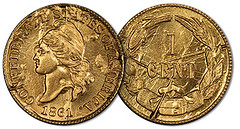 The Confederate Cent dies were brought to an old Philadelphia firm, August C. Frank and Company, and Bashlow directed them to reproduce
both obverse and reverse by the hubbing process that also copied every cut and blob in the original dies.
The Confederate Cent dies were brought to an old Philadelphia firm, August C. Frank and Company, and Bashlow directed them to reproduce
both obverse and reverse by the hubbing process that also copied every cut and blob in the original dies.
Some 30,000 impressions were eventually made from these copy dies in a variety of different metals and die thicknesses as two-sided pieces and as impressions on rectangular planchets. These were relentlessly advertised with double-truck (facing pages) ads in the numismatic press, especially Coin World. The original and copy dies were later donated with requisite fanfare to the Smithsonian Institute.
All Bashlow ads were bold and flashy, featuring borders of Confederate flags, garish typefaces presenting a barrage of breathless claims about the great opportunities that this SECOND RESTRIKE OF THE CONFEDERATE CENT offered to the trusting reader. Intense controversy erupted over these claims. Just what was a “Second Restrike”? What were “copy dies” and why should anything struck from them have any value at all? And besides, who was this Robert Bashlow?
To read the complete article, see:
Robert Bashlow (www.coinweek.com/featured-news/robert-bashlow/)
THE BOOK BAZARRE
EXHIBIT: FOR THE LOVE OF MONEY
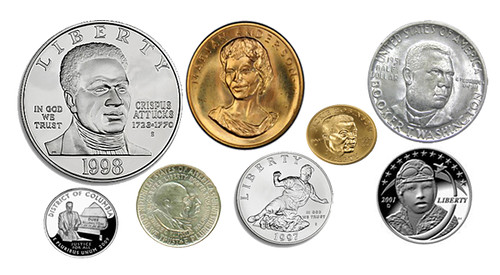
Little Rock Central High School National Historic Site will be hosting the exhibit For the Love of Money between now and September 30th. For the Love of Money celebrates the Black icons, seminal historic events and institutions whose significant contributions to American and Black history have been recognized through commemoration on United States currency in the form of commemorative coins and medals.
The pioneering icons featured on United States commemorative currency represent several American and Black History firsts. Including Marian Anderson who became the first Black person and Black woman awarded a Congressional Gold Medal by the United States Congress and subsequently featured on a replica commemorative bronze medal in 1978.
Joe Louis who became the first Black man and Black athlete awarded a Congressional Gold Medal by the United States Congress and subsequently featured on a replica commemorative bronze medal in 1982 and Roy Wilkins who became the first Black civil rights leader awarded a Congressional Gold Medal by the United States Congress and subsequently featured on a replica commemorative bronze medal.
A Congressional Gold Medal is an award bestowed by the United States Congress through legislation, or Public Law, that is signed by the President of the United States. Congressional Gold Medals are produced by the United States Mint. The Congressional Gold Medal and the Presidential Medal of Freedom are the two highest civilian awards that can be bestowed by the United States government. The Congressional Gold Medal is awarded to persons "who have performed an achievement that has an impact on American history and culture that is likely to be recognized as a major achievement in the recipient's field long after the achievement."
For The Love Of Money delivers a unique and engaging Black history experience through the presentation of 37 commemorative coins, medals, medallions, concept coins and anti-slavery tokens from the Museum Of UnCut Funk Collection that showcase 36 Black history icons, 8 seminal events and 6 iconic institutions.
To read the complete article, see:
'For the Love
of Money' exhibited at LR Central High Nat'l Historic Site
(www.thv11.com/news/local/for-the-love-of-money-exhibited-at-lr-central-high-natl-historic-site/315483535)
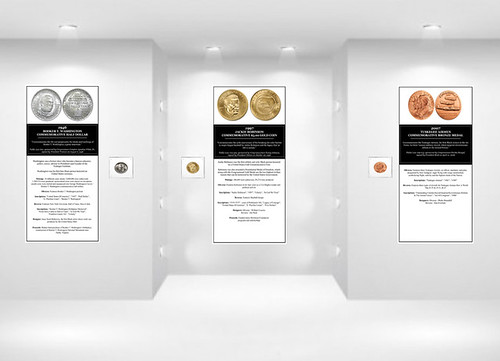
The pioneering Black history icons and historic events featured on United States commemorative currency represent several American and Black History firsts, including:
- First free Black person to appear on a commemorative coin and thus on United States currency – Booker T. Washington (1946)
- First free Black men to appear on a commemorative coin and thus on United States currency, only Black people featured on a commemorative silver half dollar coin – Booker T. Washington / George Washington Carver (1951)
- First Black person and Black woman to be awarded a Congressional Gold Medal by the United States Congress and featured on a replica Commemorative Bronze Medal – Marian Anderson (1978)
- First Black person and Black woman to appear on a United States Commemorative Gold Medallion – Marian Anderson (1980)
- First Black man and Black athlete awarded a Congressional Gold Medal and subsequently featured on a replica Commemorative Bronze Medal – Joe Louis (1982)
- First Black Civil Rights Leader to be awarded a Congressional Gold Medal and featured on a replica Commemorative Bronze Medal – Roy Wilkins (1984)
- First athlete and only Black person honored on a commemorative $5.00 gold coin, as well as the first athlete and Black person honored on a commemorative silver dollar coin – Jackie Robinson (1998)
- First South African to be awarded a Congressional Gold Medal and featured on a replica Commemorative Bronze Medal – Nelson Mandela (1998)
- First Black person and first Black musician to be prominently featured on a coin authorized for circulation – Duke Ellington (2009)
For The Love Of Money delivers a unique and engaging Black history experience through the presentation of 37 commemorative coins,
medals, medallions, concept coins and anti-slavery tokens from the Museum Of UnCut Funk Collection that showcase 36 Black history icons, 8
seminal events and 6 iconic institutions: 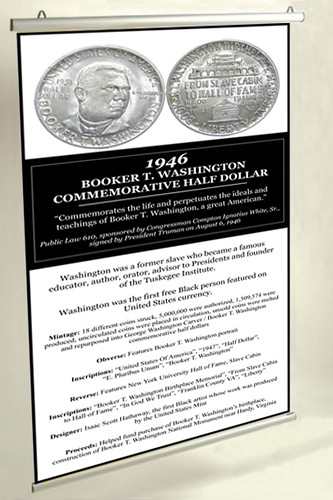
- Am I Not A Man Anti-Slave Token (1837)
- Am I Not A Woman Anti-Slave Token (1838)
- Booker T. Washington Silver Half Dollar (1946)
- George Washington Carver / Booker T. Washington Silver Half Dollar (1951)
- Marian Anderson Bronze Medal (1978)
- Marian Anderson Gold Medallion (1980)
- Joe Louis Bronze Medal (1982)
- Louis Armstrong Gold Medallion (1982)
- Roy Wilkins Bronze Medal (1984)
- Jesse Owens Bronze Medal (1988)
- General Colin Powell Bronze Medal (1991)
- Jackie Robinson $5.00 Gold Coin (1997)
- Jackie Robinson Silver Dollar (1997)
- Bessie Coleman Brass Concept Coin (1998)
- Bessie Coleman Silver Concept Coin (1998)
- Black Revolutionary War Patriots Silver Dollar (1998)
- Nelson Mandela Bronze Medal (1998)
- Rosa Parks Bronze Medal (1999)
- New Jersey State Quarter (1999)
- Missouri State Quarter (2003)
- Dr. Dorothy Height Bronze Medal (2004)
- Brown v. Board Of Education Bronze Medal (2004)
- Jackie Robinson Bronze Medal (2005)
- Tuskegee Airmen Bronze Medal (2007)
- Jamestown 400th Anniversary Silver Dollar (2007)
- Little Rock Central High School Desegregation Silver Dollar (2007)
- Senator Edward William Brooke III Bronze Medal (2008)
- District Of Columbia Quarter (2009)
- Montford Point Marines Bronze Medal (2011)
- Girl Scouts Silver Dollar (2013)
- 16th Street Baptist Church Bombing Victims Bronze Medal (2013)
- Dr. Martin Luther King, Jr. / Coretta Scott King Bronze Medal (2013)
- Civil Rights Act Of 1964 Silver Dollar (2014)
- Fighting Flying Aces Bronze Medal (2014)
- Civil Air Patrol (CAP) Bronze Medal (2014)
- Selma To Montgomery Marches Bronze Medal (2015)
To read the complete article, see:
A Panel Exhibition
Featuring Black Icons And Historic Events On U.S. Curency
(http://museumofuncutfunk.com/2015/10/24/for-the-love-of-money-blacks-on-u-s-currency-panel-exhibition/)

EXHIBIT: RISE OF THE ART MEDAL
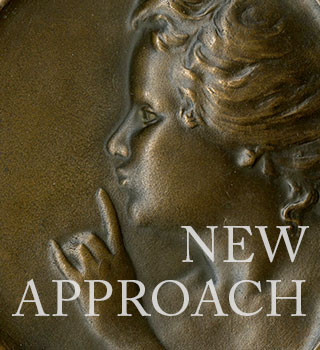 RISE OF THE ART MEDAL:
RISE OF THE ART MEDAL:
THE BELLE EPOQUE AND BEYOND
At The New Approach Contemporary Medallic Art Research Center
Curated by Scott Miller. Selected works from the collections of Alexander, Miller, Rezak, Scarinci, Simpson, and Withington.
September 2016 through July 2017
THE RISE OF THE ART MEDAL: THE BELLE EPOQUE AND BEYOND
What exactly is a “medal?” Even collectors and sculptors often ask this question. And yet, the discussion is not new. The definition of the medal has been debated several times in the past. In recent years, many works shown at the International Art Medal Federation (FIDEM) and other venues have little relation to what we think is the classic medal. Increasingly, the lines between the medal, small sculpture and paperweights seem blurred.
Even the term “medal” itself has some historic ambiguity. Until the late 19th century, the word would just as often be used to describe an out-of-date coin as it would what we would term a “commemorative medal.” Nevertheless, until about 135 years ago, virtually all medals, as we know them, were generally round and commemorative in nature. The earliest medals, dating to the renaissance, honored specific individuals. Over time, medals commemorated contemporary and historical events, and later were commonly given as prizes and awards. For 400 years, the artists and engravers who created medals often worked in most current and fashionable styles of decorative art. However, the medal rarely strayed from its commemorative role.
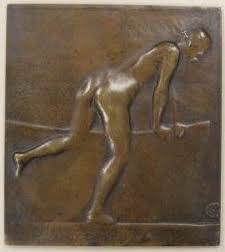 During the second half of the 19th century, several innovations in technology changed how medals could be produced and, consequently,
forever changed who could produce a struck medal. While many artists could produce a cast medal, by the 18th century, the overwhelming majority of
medals were struck. This required the services of an engraver, essentially a craftsman capable of engraving a design directly into the steel die.
Although a number of these individuals were capable of producing work with artistic merit, few could actually be considered artists. However, with
the introduction of the electrotype process in 1838 and the development of the reducing machine, it became possible for almost any artist to produce
a model that could later be reduced and transferred by technicians into a workable die. Thanks to these technologies, the craft of creating a medal
was no longer limited to engravers, and a much broader range of artists were now able to produce medals of aesthetic merit. Once the production of
medals was no longer limited to die engravers, it was inevitable that the approach to creating medals would change. Sculptors and other artists began
to try their hand at producing medals, and in the process new influences crept into medal design.
During the second half of the 19th century, several innovations in technology changed how medals could be produced and, consequently,
forever changed who could produce a struck medal. While many artists could produce a cast medal, by the 18th century, the overwhelming majority of
medals were struck. This required the services of an engraver, essentially a craftsman capable of engraving a design directly into the steel die.
Although a number of these individuals were capable of producing work with artistic merit, few could actually be considered artists. However, with
the introduction of the electrotype process in 1838 and the development of the reducing machine, it became possible for almost any artist to produce
a model that could later be reduced and transferred by technicians into a workable die. Thanks to these technologies, the craft of creating a medal
was no longer limited to engravers, and a much broader range of artists were now able to produce medals of aesthetic merit. Once the production of
medals was no longer limited to die engravers, it was inevitable that the approach to creating medals would change. Sculptors and other artists began
to try their hand at producing medals, and in the process new influences crept into medal design.
In addition to the technological advances that affected the production of medals, the late 19th century saw a rise in universal education and standards of living. Cultural activities, such as the founding and popularization of societies, museums, exhibitions and publications devoted to the arts and sciences increased. A rising middle class now had the leisure time to participate in intellectual activities, engage in artistic pursuits, and improve themselves through involvement in more refined cultural activities. Collecting became popular with the middle class, and as the number of collectors increased, so did the number of clubs and publications.
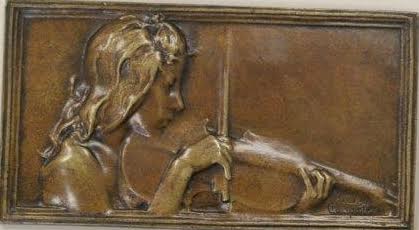
The Violinist by Alexandre Charpentier
In 1899, the first organization devoted to the art medal was organized in France, the Société des Amis de la Médaille Française. It was soon joined by groups in other countries, including the Dutch-Belgian Société Hollandaise-Belge des Amis de la Médaille d'Art and the Österreichische Gesellschaft zur Förderung der Medaillenkunst und Kleinplastik in Vienna. A number of books and articles on contemporary medals, especially those by Roger Marx, H. Dompierre de Chaufepié and F. Mazzerolle, helped promote the medal. Mainline art publications such as The Studio and Art & Décoration began to include medallic news.
Although the new approach to medallic work in 19th century France is generally attributed to Hubert Ponscarme and his 1867 medal of Joseph Naudet, the first non-commemorative medal is not as easily identified. A glance through the catalogue of the 1910 International Exhibition of Contemporary Medals reveals few non-commemorative medals prior to the late 1890s. Among the earliest were Victor Peter’s 1877 Idylle, Anton Scharff’s 1878 Viennese Laundry Maid and Alexandre Charpentier’s 1883 La Mère Allaitant. Yet within a few years the nature of the medal was completely transformed. Though commemorative medals continued to be produced, the art medal, a purely aesthetic work, was here to stay.
The increased interest in medallic art was not confined to continental Europe. Alphonse Legros and the Slade Girls helped promote the new art medal in Britain. Younger sculptors, such as W. Goscombe John, Theodore Spicer Simson and Carter Preston created medals featuring the new aesthetic. In the United States, Augustus St. Gaudens and his many pupils inaugurated a new appreciation for the art medal.
However, despite the dramatic growth of interest in the art medal, commemorative and prize medals remained the norm. In both the US and Britian, art medals continued to be rare. Of the 12 medals published by the Circle of Friends of the Medal between 1909 and 1915, only three were not commemorative in nature. Victor D. Brenner, whose Motherhood medal was a reworking of a plaque he produced in Paris in 1899, was a full time medalist. Isidore Konti, sculptor of There’s No Place Like Home only produced 3 medals during his career as a sculptor, while Sigurd Neandross, whose The Oceans medal is possibly the finest in the series, appears to have not produced any other medallic work.
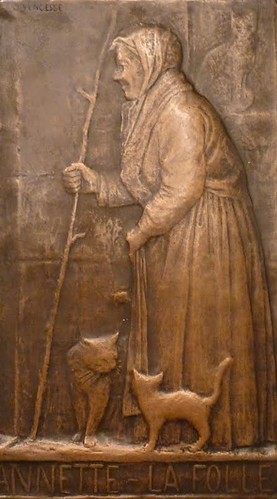 A quick examination of medallic work in the US prior to World War I reveals remarkably few art medals. Certainly, American medalists were
capable of producing art medals, and often did during their student days in Paris. Thus, we have Brenner’s Motherhood plaque of 1899 (later used for
the Circle of Friends) and Amory Simons’ Deer plaque. Of the 63 different designs exhibited by Brenner in 1910, only two could be considered as
purely decorative. The Englishman Frank Bowcher created a charming music plaque while in Paris; Gilbert Bayes exhibited some wonderful art plaques
during the 1910 International Exhibition of Contemporary Medals, but they are much too large to be considered as medals. Artists in the US and
Britain who created medals at this time may have just been responding to market demand for them and working mainly for the commissions. In any event,
it was many years before art medals were produced in these two countries in any quantity.
A quick examination of medallic work in the US prior to World War I reveals remarkably few art medals. Certainly, American medalists were
capable of producing art medals, and often did during their student days in Paris. Thus, we have Brenner’s Motherhood plaque of 1899 (later used for
the Circle of Friends) and Amory Simons’ Deer plaque. Of the 63 different designs exhibited by Brenner in 1910, only two could be considered as
purely decorative. The Englishman Frank Bowcher created a charming music plaque while in Paris; Gilbert Bayes exhibited some wonderful art plaques
during the 1910 International Exhibition of Contemporary Medals, but they are much too large to be considered as medals. Artists in the US and
Britain who created medals at this time may have just been responding to market demand for them and working mainly for the commissions. In any event,
it was many years before art medals were produced in these two countries in any quantity.
Despite the success of the modern medal, there were some who felt that the traditional methods were still the best, and questioned the legitimacy of medals produced as large models and later reduced. Much of this criticism seems to have come from Germany, including claims of weak technique, inadequate modeling and artificiality. However, within a brief period of time, the direct engraving of dies became a rarity. The cast medal, generally in bronze, remained in fashion somewhat longer, especially when produced as a larger piece. But even these, such as the Robert Louis Stevenson plaque by Augustus St. Gaudens, are sometimes deceiving. Cast medals and plaques, when available in a variety of sizes, indicate the use of a reducing machine at some point.
Choosing what to include in this exhibit was not always easy. There is often no real difference in the artwork between the commemorative and the art medal. The distinction exists only in the medal’s function. Take, for example, Marie-Alexandre Coudray’s 1899 Orpheus, which bears a small cartouche on the reverse, indicating the medal’s possible use as an award. Consider, on the other hand, Geneviève Grangers Profile of a Young Woman. The artist’s decision to exhibit it as a non-specific portrait turns what would otherwise be a commemorative into an art medal.
The majority of medals in this exhibition are European and date between 1878 and 1920. It is this period that saw the emergence and development of the art medal, often using new technology that some believed would threaten the quality of medallic art. They also started the discussion of what constitutes a medal—a discussion that persists to this day.
This exhibition would not be possible without the help and support of a number of friends and collectors who graciously lent items for display, David T. Alexander (DTA), Ira Rezak (IR), Donald Scarinci (DSc), David Simpson (DS), and Frederic Withington (FW). I would also like to thank Mashiko who provided gallery space, as well as James Quigley, whose editorial suggestions were invaluable, and my wife, Roslyn Miller.
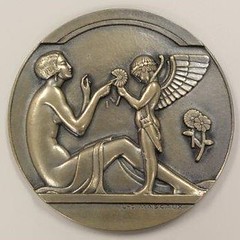
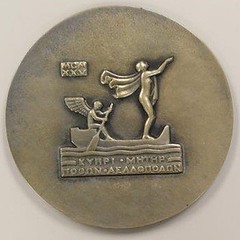
Venus and Cupid by Claude Leon Mascaux
For more information, see the Medalia Gallery web site:
http://www.medialiagallery.com/
EXHIBIT: BENJAMIN FRANKLIN PORTRAITS
Joe Esposito writes:
There was an interesting article in the September 7 edition of The Wall Street Journal about a new, small exhibit of Benjamin Franklin portraits at the Metropolitan Museum of Art. The article and exhibit include images of two paintings by Joseph-Siffred Duplessis. His “Fur Collar” painting was featured on $100 bills from Series 1928 until being supplanted by the ”Gray Coat” in Series 1996. Duplessis, who died in 1802, was an early curator of the Versailles museum as well as painter of a number of French leaders at the end of the eighteenth century.
There are, of course, many images of Franklin that are featured on coins, tokens and medals, including those by Augstin Dupre, Godel, Augustus and Louis Saint-Gaudens, Julio Kilenyi, John R. Sinnock, and Elisabeth Chandler. And yet, the renderings by Duplessis remain the most well-known of this American original.
Phil W. Greenslet and David Schenkman published The Medals of Franklin: A Catalog of Medals, Tokens, Medallions, and Plaques in Honor of Franklin through the TAMS in 1993.
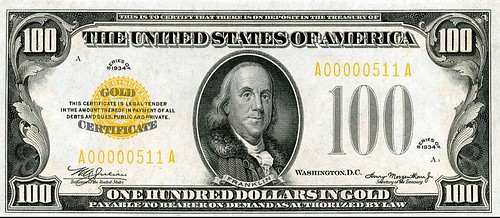
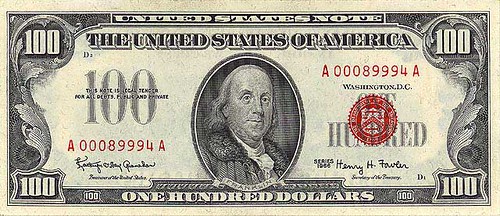
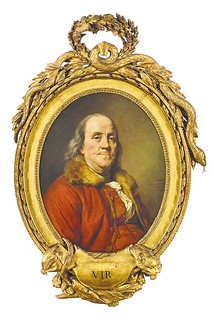 Franklin was sent to France in October to secure French support for the war of independence. He became the toast of Paris. Artists vied to
paint his portrait and, of the resulting works, the most familiar and widely reproduced was the oval one by the French royal portraitist Joseph
Siffred Duplessis (1725–1802) depicting Franklin in a red coat with a fur collar. Long known as the “Fur Collar” portrait, it was first exhibited in
1779, and with its heroic gilt frame it has been in the Met’s collection for 85 years.
Franklin was sent to France in October to secure French support for the war of independence. He became the toast of Paris. Artists vied to
paint his portrait and, of the resulting works, the most familiar and widely reproduced was the oval one by the French royal portraitist Joseph
Siffred Duplessis (1725–1802) depicting Franklin in a red coat with a fur collar. Long known as the “Fur Collar” portrait, it was first exhibited in
1779, and with its heroic gilt frame it has been in the Met’s collection for 85 years.
This venerable work is the centerpiece of the small but compelling show organized by Katharine Baetjer, curator in the Department of European Paintings. The show also includes Duplessis’s rarely exhibited Franklin pastel portrait (1777-78), on loan from the New York Public Library. Depicting the statesman in a simple gray coat, it is the likeness for which Franklin actually sat for Duplessis—bored by posing, he refused to sit for an artist more than once. X-radiography displayed in the show proves that Duplessis copied his oil portrait from the pastel, changing the color of the coat and adding the fur collar.
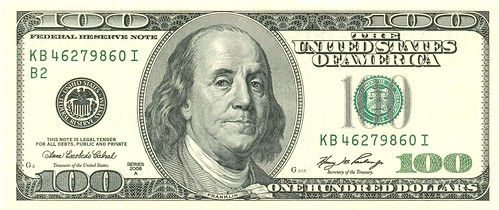
To read the complete article (subcription required), see:
‘Benjamin
Franklin: Portraits by Duplessis’ Review: How We Picture a Founder
(www.wsj.com/articles/benjamin-franklin-portraits-by-duplessis-review-how-we-picture-a-founder-1473198522)

SELECTIONS FROM DAVE WNUCK'S SEPTEMBER 2016 INVENTORY
1856 Braided Hair Half Cent
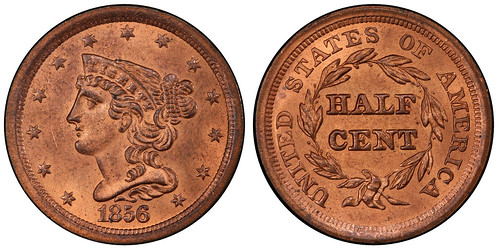
1856 Braided Hair Half Cent. PCGS graded MS64 Red. CAC.
Full blazing red on a type that simply does not come this way. A freak of nature, for sure. A coin like this should simply not exist. $7750.
1795 Anti-Slavery Conder Token
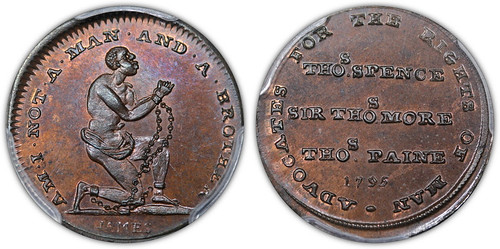
1795 Anti-Slavery Conder Token Farthing. PCGS graded MS66 Brown.
Middlesex D&H-1118. A heartbreaking rendition of a man in chains, on his knees. The English were decades ahead of the Americans in abolishing the slave trade, though both countries profited mightily from the “peculiar institution” in the meantime. This example is superlative in every way and available at a most reasonable price. $1250.
Next up are some cool architectural medals. Dave's nicely paired the medal images woth photos of the buildings,
Cathedral at St. Aubin at Namur Medal
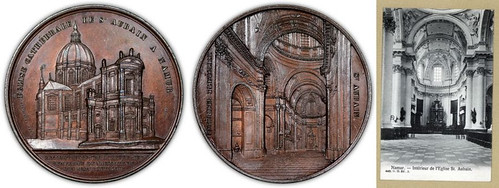
1846 Wiener Medal. Cathedral at St. Aubin at Namur. Uncirculated [uncertified].
59 mm, bronze. Van Hoydonck 22. A gorgeous example of Jacques Wiener's depiction of this famous cathedral in Belgium. $295
Cathedral At Florence Medal
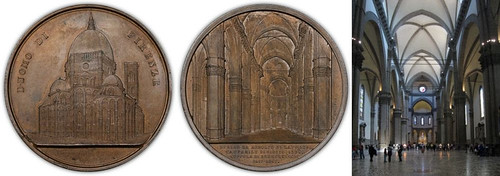
1864 Wiener Medal. Cathedral At Florence. Uncirculated [uncertified].
59 mm, Bronze. Van Hoydonck 205. One of the most recognizable buildings in Italy, the cathedral was begun in the 13th century. The east doors were dubbed by Michelangelo the Gates of Paradise, so those must be some swell doors. Jacques Wiener does his usual amazing job of 3D sculpture on this medal. Pristine, original and un-brushed. $395.
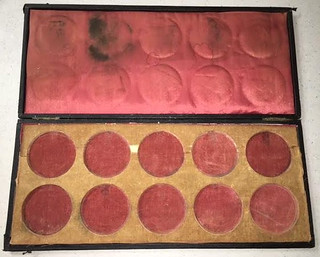 Jacques Wiener Medals Presentation Box
Jacques Wiener Medals Presentation Box
Original Presentation Box to house Ten Jacques Wiener Medals. Fine.
One of the very rare presentation boxes used to house and display Jacques Wiener's 59mm (i.e. the larger size) Cathedral medals. The
few I've seen of these over the years are always in rough shape; this example is a little better than most. Much rarer than the medals
themselves. $750.
1983 Hawaiian Dollar Medal Die Set up Piece
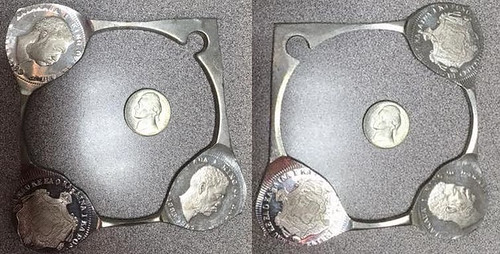
Die Set up Piece for 1983 Hawaiian Dollar Medal. Uncirculated [uncertified].
An unusual and dramatic Die Set-Up strike from the Royal Hawaiian Mint, struck in the mid 1980’s. The RHM struck replica medals of the 1883 Hawaiian Dollar. The notorious Bernard Von Nothaus (hey – wouldn't that be a great name for the bad guy in a James Bond movie, or maybe for a German rapper?) made this three-strike item on a square piece of scrap metal to test the dies and presses. It measures 4’ x 4’ on each side, and all three strikes are die struck on both sides. Von Nothaus was found guilty in a Federal Trial regarding the “Liberty Dollar” he had been minting for almost ten years. A cool item to have on your desk. $195.
Eliasberg Correspondence File
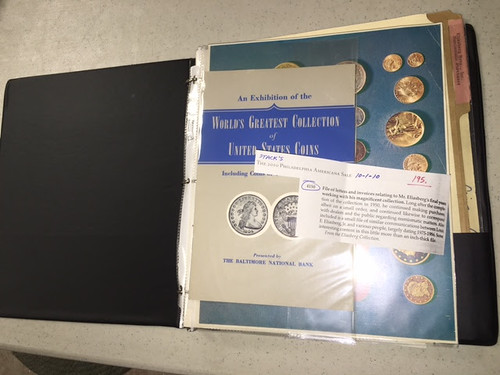
(Circa 1975-1986) Personal Files and Letters of Louis Eliasberg.
A file of correspondence between Louis Eliasberg and various collectors and dealers – some wanting to sell him some more coins, and some wanting to purchase or auction his collection. Housed in a 3 ring binder with a brochure and other ephemera relating to his magnificent collection. $195.
To read the complete issue, see:
Making the Grade #30: The Labor Day Issue
(www.davewcoins.com/newsletter/making-the-grade-30-the-labor-day-issue)
THE BOOK BAZARRE
THE GOLD CARD OF ALASKA
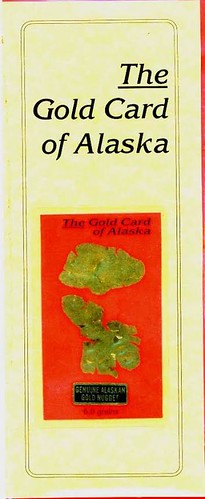 This was an interesting attempt to market small gold ...nuggets. To quote the flier accompanying the brochure:
This was an interesting attempt to market small gold ...nuggets. To quote the flier accompanying the brochure:
“Last summer, we had a visitor ask to buy a $20.00 nugget. He wanted it about two inches long. Knowing a two inch nugget is worth over $3,000.00 (if you can find one), we pondered possible solutions.
“We use nuggets from the mining operation to create jewelry during the winter. We purchased a roll mill to manufacture earring posts, wire and sheets used in our handmade line.
“A roll mill works like an old wringer washer. We decided to try flattening some nuggets.
“Like observing clouds, we saw different images develop from each golden stone. Rotating the gold in the mill would give it an entirely new presence. Each time the nuggets passed through the rollers, they expanded in dimension; their shapes transformed.”
The Gold Card comes with the flier quoted above (with more information than shown above) and a nice card stock brochure. The front of the brochure can be seen to the right (shown actual size). Each gold card contains a flattened nugget weighing 6 grains.
The back of the gold card gives a brief description of the process (shown above at a reduced size).
These are available for $25 each, postpaid. This is just another example of how miners tried to enhance the value of their gold and avoid sending it to the refiners.
ALASKA GOLD TOKENS: A TALE OF TWO CREEKS
EUREKA CREEK
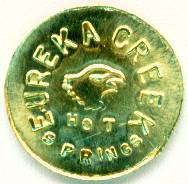
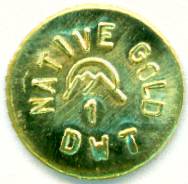
Eureka Creek is in the Hot Springs Mining District. Gold was first discovered there in 1898. The reported fineness of the gold ranges from .774 to .836. I purchased 1.00 troy ounce, and suffered a 12.3% melt loss. Specific gravity indicates a fineness of 75.35% for this gold.
It took me four tries to get an acceptable Eureka Creek die. I don’t use the tiny letter punches very often, and have a difficult time getting them lined up. I figured this was as good as it was going to get.
From the .877 ounces left, I made 16 tokens. These are available for $85, including a silver die trial. The silver die trial is available for $5. Prices are postpaid.
LINDA CREEK
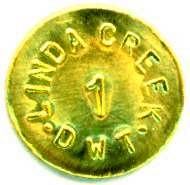
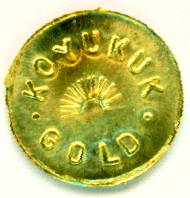
Linda Creek is in the Koyukuk Mining District. It has been in production since 1901. The reported fineness is .914. Specific gravity indicates a fineness of .9129.
When you say “Koyukuk gold” or “Wiseman gold” to an Alaskan miner, he immediately thinks of the high purity, with assays as high as .973, and consistently above .900.
I purchased 1.002 troy ounces. After the first melt, the weight was .973 oz., a melt loss of only 2.9%. From this gold, I made 18 tokens. Because I have another ounce of gold from the Koyukuk, I made a special reverse die to use on these two lots.
These are available for $90, including (2) silver die trials. The silver die trials are available for $10 for the pair. Prices are postpaid.
The “tale” is in the difference between the two sources of gold. One had a low purity with a high burn off, while the other had a high purity and a low burn off. One was dirty (small particles of dirt) while the other was clean.
When making the Eureka Creek token, the thickness of the planchet was about .54mm. Since the Linda Creek gold is so much finer, the planchet only needed to be .49mm to yield 1DWT.
WISEMAN GOLD William Ho, the buyer for General Refining Corp. called me and said “Dick, you said you wanted some Wiseman gold?” I said, of course, and walked over to his office. (ed. note - Wiseman is the “village,” while Koyukuk is the mining district).
I looked at the gold and thought, “Really, Wiseman?” But I trust William, and purchased an ounce of some of the ugliest placer gold I have seen. It was dark and rocky.
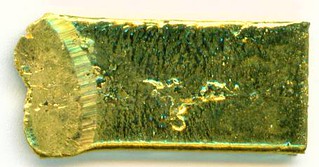 I melted it and had only a 6.8% melt loss, much better than I was expecting. The ingot had a nice gold color, so I knew it would be good.
Specific gravity indicates a fineness of about .9248. Really nice gold. When pouring, usually the top of the ingot is irregular. This must be
flattened so air will not cling to the ingot and throw off the specific gravity. Yes, that is what about an ounce looks like!
I melted it and had only a 6.8% melt loss, much better than I was expecting. The ingot had a nice gold color, so I knew it would be good.
Specific gravity indicates a fineness of about .9248. Really nice gold. When pouring, usually the top of the ingot is irregular. This must be
flattened so air will not cling to the ingot and throw off the specific gravity. Yes, that is what about an ounce looks like!
But there is a problem. William knows that this is from the Wiseman area, but does not know the exact origin. Hopefully, he will see his client soon, and I will make another token from the Koyukuk.

2014 CENTRAL AMERICA TREASURE AWARDS TO RLP
The full fair market value of the treasure recovered in 2014 from the 1857 wreckage of the SS Central America has been awarded by a federal judge in Virginia to the salvor, Recovery Limited Partnership.
The Aug. 31 ruling by Chief Judge Rebecca Beach Smith from the United States District Court for the Eastern District of Virginia in Norfolk, also awards title to Recovery Limited Partnership of all items recovered during the 2014 salvage operations by RLP’s contractor, Virginia in Norfolk, also awards title to RLP of all items recovered during the 2014 salvage operations by RLP’s contractor, Odyssey Marine Exploration of Tampa, Fla.
Judge Smith’s ruling was announced Sept. 6 by Ira Kane, the court-appointed receiver for Recovery Limited Partnership.
Disposition of the award will occur under the auspices of Kane as receiver, subject to the approval of Franklin County Common Pleas Court Judge Patrick Sheeran in Columbus, Ohio.
2014 EXPEDITION
RLP contracted with Odyssey Marine Exploration in 2014 to conduct the archaeological excavation and recover the remaining valuable cargo
from the SS Central America shipwreck, which is located approximately 160 miles off the coast of South Carolina and 7,200 feet
underwater.
Under the direction of a project archaeologist (Neil Cunningham Dobson, with Bob Evans, well-known to the numismatic community, as the chief scientist), the Odyssey team deployed a remotely operated vehicle to recover and document more than 15,500 gold and silver coins, 45 gold bars, and hundreds of other artifacts from the SS Central America shipwreck site.
To read the complete article, see:
Who gets to keep the SS
Central America treasure recovered in 2014?
(www.coinworld.com/news/us-coins/2016/09/judge-awards-ss-central-america-treasure-to-salvors.html)
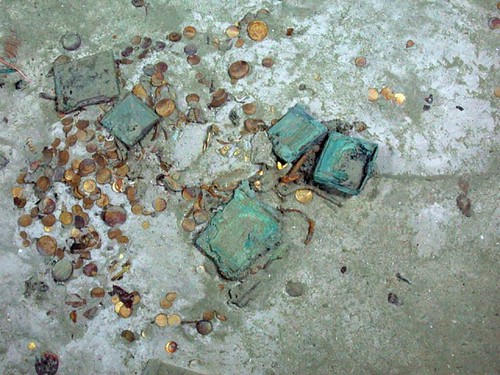
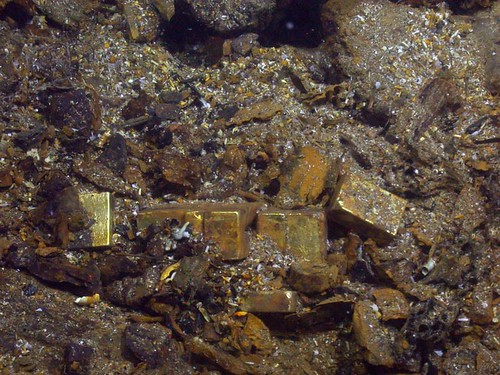
To read the earlier E-Sylum articles, see:
ODYSSEY MARINE TO ATTEMPT SS CENTRAL AMERICA SALVAGE
(www.coinbooks.org/esylum_v17n10a20.html)
COLUMBUS-AMERICA GROUP SUES ODYSSEY (www.coinbooks.org/esylum_v17n21a10.html)
JUDGE RULES FOR ODYSSEY SS CENTRAL AMERICA GROUP
(www.coinbooks.org/esylum_v17n29a20.html)
LATEST SS CENTRAL AMERICA FINDS REVEALED
(www.coinbooks.org/esylum_v17n30a05.html)
A NEW RULING IN THE CENTRAL AMERICA CASE
(www.coinbooks.org/esylum_v18n34a10.html)

Archives International Auctions, Sale 35
Chinese, Asian & Worldwide Banknotes,
Chinese Scripophily, Coins and
Security Printing Ephemera
September 26, 2016
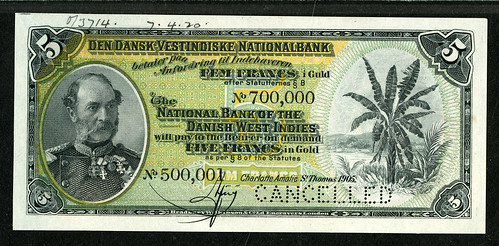
Click the links! Highlights include:
Lot 49: Lot 49 British North Borneo Company
Lot 74: Ming Dynasty Circulating Note
Lot 172: Lot 172 Russo-Asiatic Bank, 1913-1917
Lot 174: Sino-Belgian Bank, 1908-1912 Mexican Dollar
Lot 272: Banco Nacional 1899 Provisional Issues
Lot 307: National Bank of the Danish West Indies 1905 Specimen
Lot 356: Ethiopia 500 Thalers 1932 High Grade rarity
View the Virtual Catalog
Download the Catalog in PDF format
ARCHIVES INTERNATIONAL AUCTIONS, LLC
1580 Lemoine Avenue, Suite #7
Fort Lee, NJ 07024
Phone: 201-944-4800
Email: info@archivesinternational.com
WWW.ARCHIVESINTERNATIONAL.COM
FRUIT OF THE LOOM CENTENNIAL MEDAL
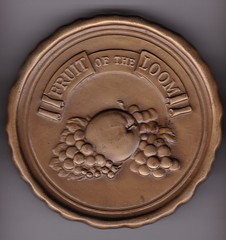
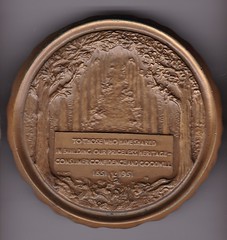
Harry writes:
Julio Kilenyi was born in Arad, Hungary 1885 and died in NYC 1959. Attached is a clipping I found some time ago. It is from The Gallup Independent, Gallup, NM Jan. 30. 1951 p2. Must have been a slow news day in Gallup. Kilenyi did do this medal; he signed the reverse. It was struck by the Robbins Co of Attleboro, MA.
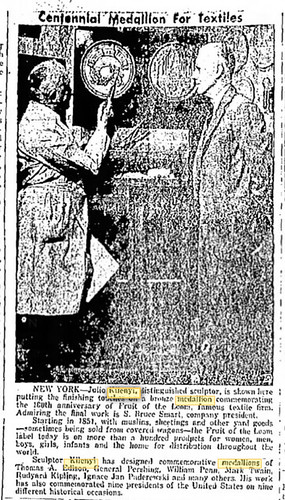
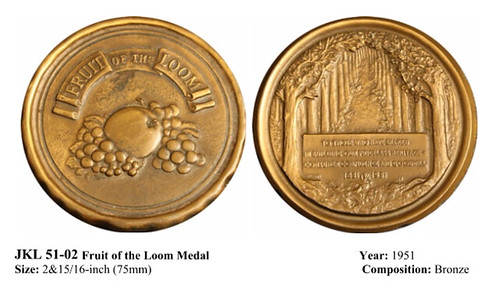
Obverse: An apple nestled between two grape clusters with a few currents at the bottom. A crescent shaped banner with rolled ends bears the legend: FRUIT OF THE LOOM. The composition is placed at the center of a cross-hatched textured circular field. The field has a small narrow rim rising to a large more pronounced outer rim.
Reverse: A path leads through a wood with laurel trees to the right and oak trees to the left with an intertwined canopy of leaves above. Across the foreground between the two largest tree trunks is a rectangular tablet with a 4-line on-center inscription: TO THOSE WHO HAVE SHARED / IN BUILDING OUR PRICELESS HERITAGE- / CONSUMER CONFIDENCE AND GOODWILL / 1851 1951. The scene is framed by a narrow circular gutter rising to a large rounded rim. There is a tiny KILENYI at the bottom of the tablet flush left.
Signed: Kilenyi
Edge: Scalloped and plain
Issuer: Fruit of the Loom, Inc., Pontiac, RI
Design: "The Fruit of the Loom seal is on one side of the medallion. The other side symbolizes a path leading out of the past through a forest of laurel and oak trees down to the milestone of the present. The laurel, on the left, is the traditional symbol for honor and dignity while the oak portrays strength."1
Ephemera: Each boxed medal came with a folded business card style insert. The front of the insert was an artist's drawing of the obverse of the medal with the fruit colored appropriately. The copy inside described the meaning of the medal and saluted all those who contributed to the centennial of the company.
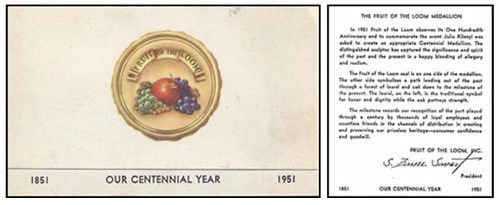
To read the complete eBay lot description, see:
MEDAL - FRUIT OF THE
LOOM - 100 YR ANNIVERSARY - 1951 - KILENYI - GREAT SUBJECT
(www.ebay.com/itm/MEDAL-FRUIT-OF-THE-LOOM-100-YR-ANNIVERSARY-1951-KILENYI-GREAT-SUBJECT/162186261886)
VIDEO: POLISHING 3D PRINTED BRONZE COINS
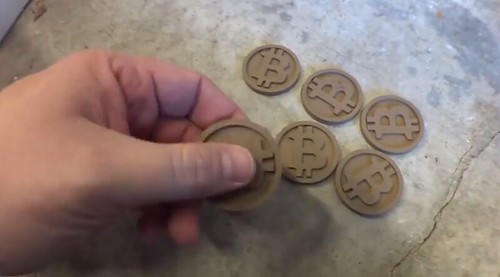
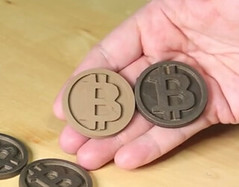
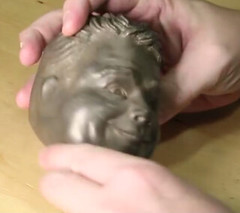
I finally found a great method for polishing colorFabb Bronzefill 3D printer filament. It involves a rock tumbler, stainless steel pin media and a little bit of time! Polishing 3D printed coins & myself!
To read the complete article, see:
Polishing 3D Printed Bronze w/ Rock Tumbler & Steel Pins
(www.youtube.com/watch?v=nDoYO22103Q)
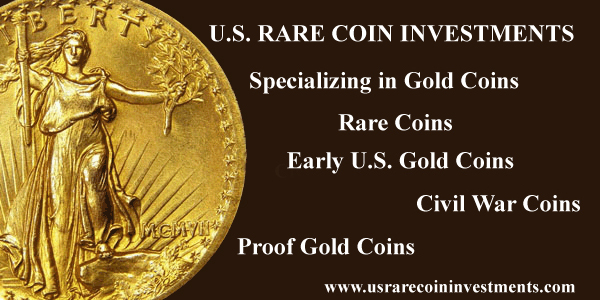
AN ALCHEMY MEDAL
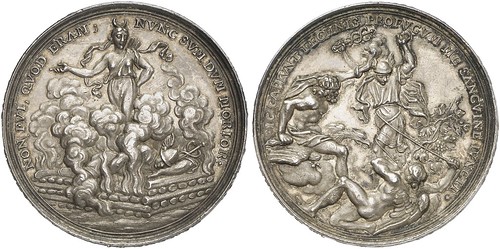
Auction 282 - Lot number 4792: City of Nuremberg. Silver medal, no year (ca. 1700), die cut by Philipp Heinrich Müller, from the Friedrich Kleinert medal mint. Luna-Diana over Mercury, lying on the burning stake. Rev. Winged Saturn chains fleeing Mercury with vine, between them Jupiter, sitting on an eagle and holding a torch. Estimate: 4,000 euros
When this medal was produced, many alchemistic theories were part of the intellectual common knowledge of the educated upper class. It was known, that the sun was connected to gold, the moon to silver, Mars to iron and the movable Mercury to the ever changing quicksilver. Jupiter represented pewter, Venus copper and Saturn lead. Earth wasn’t assigned a metal, because the general thinking (still) thought of it as the center of the universe, not a planet.
Alchemy was a complicated science, which many important scholars had devoted their time to already in the Middle Ages: Albertus Magnus, Thomas of Aquinas, Roger Bacon. They were fascinated by the possibility to explore and describe the world through scientific methods. Since this art meant high commitment and spending a lot of money, many alchemists were looking for a patron, who would finance their studies.
The medal’s theme is the transformation of one metal to another. NON FVI, QVOD ERAM; NVNC SVM, DVM MORIOR (= I wasn’t what I was, now I am, by dying). This is what Luna says as the goddess of the moon, symbol of the element of silver, which, through heat, can be extracted from quicksilver, for which the god Mercury stands at the stake.
The reverse displays the combination of lead (Saturn), pewter (Jupiter) and quicksilver (Mercury). Saturn chains the fleeing Mercury with vines, whom Jupiter warms with his fire. And alchemy wouldn’t be a secret science, if outsiders wouldn’t be puzzled by the meaning of motif and legend: Thus my blood relations chain me because I fled the arts.
In fact, this medal is not only a testimony for a way of thinking, which ultimately led to one of the most important sciences: Chemistry. Furthermore, the medal also shows the human weakness of a master of his craft, who ruined himself with his passion for alchemy and left behind this rare medal as a reference to his passion.
To read the complete article, see:
The age of alchemy
(/www.kuenker.de/en/information/presseinformationen/aktuelle-mitteilungen/89)
INSIDE THE BANK OF ENGLAND'S VAULTS

It’s the smell that hits you first. As the doors to the Bank of England’s lifts slide open, the underground corridor that greets you doesn’t feel like it leads somewhere important.
It smells like old books, but this isn’t the Bank’s library.
Instead, we’re outside one of Threadneedle Street’s bank vaults.
The Bank houses eighteen of these strongrooms. Nine for gold, and nine for cash.
“We like to keep them equal,” says Ian Hann, the Bank’s vault manager.
As the door to one swings open, the reference to cages in the lift suddenly becomes clear.
Rows and rows fill the room, four levels high and packed full of brand new banknotes. The cages are identical, and most contain fifty pound notes, £10m in each to be exact.
With at least ten cages in each row, it’s hard to stop thinking about what you could buy with all that money. “This one feels quite empty,” says Cleland. “I’ve been in some rooms where you can hardly walk."
"Earlier this year this room was full," Hann adds. “We’ve had nearly 900 cages in here."
The Telegraph was granted special access. Another request came from Mark Carney himself, with the Governor taking advantage of one of the more unusual perks of the job.
There’s a reason for the interest. At 12:01am on Tuesday, shops and banks will start to distribute a new £5 note from their tills and ATMs when the Bank launches the new fiver.
The new note is 15pc smaller than the current one, and will feature Sir Winston Churchill, the former prime minister, who replaces prison reformer Elizabeth Fry.
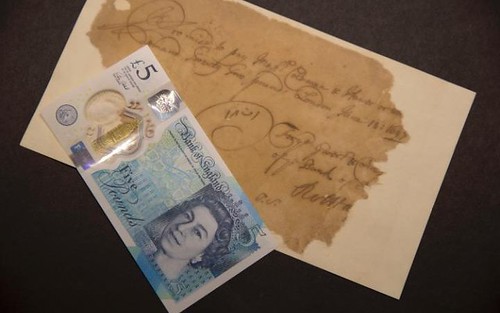
The oldest "running cash" note from 1697 is pictured alongside the new plastic £5 note at the Bank of England
To read the complete article, see:
Inside the Bank of
England's vaults: can cash survive?
(www.telegraph.co.uk/business/2016/09/11/inside-the-bank-of-englands-vaults-can-cash-survive/)
To read the earlier E-Sylum article, see:
A VISIT TO THE CHARLOTTE FEDERAL RESERVE BRANCH
(www.coinbooks.org/esylum_v19n34a19.html)
THE BOOK BAZARRE
SECURITY FEATURES ON AUSTRALIA'S NEW BANKNOTE
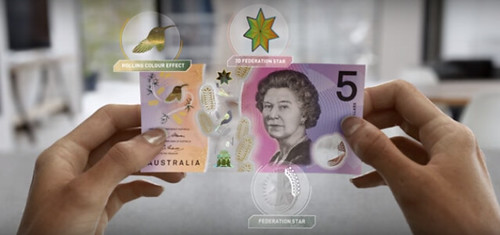
Australia has a new $5 banknote, and it looks expensive.
Put all issues of taste aside, and I see nothing short of cash bought from the future. It’s a psychedelic trip to the bank, layered in metallic foils and a seemingly endless array of color shifting inks that glisten like an oil slick. Bend the note, and a printed bird flaps its wings. The ink has texture. It even has nubs. Part of the bill has been carefully primed like paper, while part has been kept relatively pristine and pure, pushing printing technologies to their limits.
And perhaps most notably, the center of the note isn’t printed at all. It’s a clear window, revealing the note’s greatest coup: This bill wasn’t printed on paper, even though the texture feels that way. It’s a magic trick of plastic.
In a world full of smartphone payments and cryptocurrency, 85% of all transactions are still done in cash. Australia actually sees cash demand rising at a steady 6% to 7% per year with no decline on the horizon.
Yet, as printers and scanners become more sophisticated, the government has moved to ensure that its currency is safe. "What we noticed in recent years, with the availability of technology—particularly around reproduction technology like scanners and printers—counterfeiting in Australia had started to increase. We’re in the fortunate position where it’s still pretty low but it is rising," says James Holloway, deputy head of note issue at Reserve Bank of Australia. "We thought we just don’t want it to keep rising in a sustained fashion, so the time had come around upgrading security."
Now the Reserve Bank has released a new design of the $5 note, soon to be followed by a complementing makeover of its entire line of currency. And after speaking with James Holloway about the 10-year process behind the design of their new note, I can assure you, crime doesn’t pay. Counterfeiting just sounds way too hard.
MONEY'S BIGGEST SECRET IS THAT IT'S JUST REALLY HARD TO PRINT "What you’re trying to do is create a banknote that’s very difficult to forge, either in being costly, or in effort. If someone has to go through a huge amount of effort to reproduce these to pass it, it’s not going to be a cost-effective proposition," says Holloway. "If we make it just too difficult for them, they’re just not going to be tempted."
Australia’s $5 note has been in development for a decade. It began with three concept designers reimagining the existing currency with royalty, flora, fauna, and more than 200 proposed security measures. That was only step one. Most of the real work happened when the winning design was taken to the country’s banknote printing industry, and over years, engineers figured out how they could actually produce the most complicated bill they could imagine. Because in a world where our off-the-shelf ink-jet printers can seemingly print anything, currency has to be designed to be as unprintable as possible.
When Australia moved to polymer banknotes 25 years ago, it raised the bar. Have you ever tried to draw on plastic—maybe the back of your credit card—and smeared the ink? Printing on plastic cash is similarly difficult.
Even today, smearing and bleeding are real issues at the industrial scale, and the modern Australian banknote continues to exploit this fact in several ways, pushing printing to its technical limits. They feature microprint—tiny text that’s difficult for machines to handle. Then they squeeze "security features"—those complex printed foils are embedded with holograms, while color-shifting inks seem to spontaneously catch light in a predictable rainbow—very close to one another. "We’re trying to cram a lot of different things in a limited space, and printing to tight tolerances so colors don't bleed from one part to another," says Holloway. Any graphic designer would find the results fairly hideous, and yet, they’re very hard to reproduce.
As for the image of the queen, that’s been rendered like an engraving, with long, spindly, and swirly lines. It’s a throwback to an older aesthetic we expect in currency, but this linear graphic approach is also "very difficult for most printers to reproduce," says Holloway. "Most printers are dot matrix, so if you look under a microscope, they’re just a lot of dots put together. So it’s actually part of the security printing process." In other words, older print graphics are actually harder to counterfeit.
To read the complete article, see:
The Painstaking, Secretive Process
Of Designing New Money (www.fastcodesign.com/3063512/the-painstaking-secretive-process-of-designing-new-money)
A CLOSE LOOK AT RUSSIAN BANKNOTES
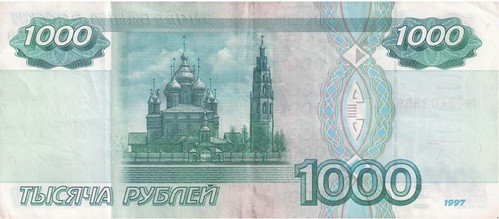
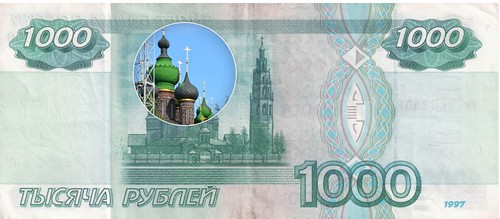
To read the complete article, see:
Take a close look at Russian treasures
(http://rbth.com/multimedia/pictures/2016/08/26/money-notes_624551)
TRAIL OF BANKNOTES LEADS COPS TO CROOKS
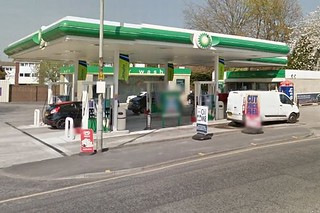 Like a sort of criminal Hansel and Gretel, two thieves left a trail of banknotes leading police to their hiding spot after they blew up an
ATM.
Like a sort of criminal Hansel and Gretel, two thieves left a trail of banknotes leading police to their hiding spot after they blew up an
ATM.
Christopher Bowyer, 32, and Christopher Myatt, 20, used gas to blow up a cash machine on the forecourt of a BP Garage in Cheadle, Stockport, and then left with £25,000, Minshull Street Crown Court heard.
Police didn’t have to look far to find those responsible, principally because Bowyer and Myatt left a trail of roughly £2,500 in notes. A force helicopter found the pair hiding on the M56 gantry at the Wythenshawe junction. After they were caught, police found on Myatt’s phone internet searches for the gas used in the explosion as well as pictures of the petrol station forecourt.
The pair pleaded guilty to causing an explosion likely to endanger life, and theft.
To read the complete article, see:
Thieves who blew
up cash machine caught after leaving trail of banknotes
(http://metro.co.uk/2016/09/06/thieves-who-blew-up-cash-machine-caught-after-leaving-trail-of-banknotes-6112275/)
TRAIL OF PENNIES LEADS TO STOLEN DRUMFUL
A penny-wise heist ended more than 1,600 pounds-foolish.
Taylor police charged a Scott Twp. man with burglary this week for stealing a steel drum filled with $3,000 worth of pennies that belonged to his employer, according to a criminal complaint.
Robert E. Napolitan, 34, 99 Novitski Road, wheeled the steel drum, which weighed more than 1,600 pounds, on a hand truck across a dusty floor at Pyne Freight Lines Inc. on Union Street on Monday, Sgt. William Roche and Patrolman Eugene Mentz said in an affidavit. Tracks through the dust and a trail of pennies marked his path.
Mr. Napolitan had a key to the building’s back door and informed a company dispatcher he would be there late at night during the Labor Day holiday weekend to remove parts from a disabled Dodge Durango. Security camera footage captured his white Jeep Cherokee pulling in at 2:30 a.m. Monday but did not show he worked on the Dodge.
Police searched his Jeep and found 89 pennies underneath the seats and floor mats. Mr. Napolitan admitted he stole the pennies, police said. In addition to burglary, he also is charged with criminal trespass, theft by unlawful taking and receiving stolen property — all felonies.
Mr. Napolitan is in Lackawanna County Prison in lieu of $50,000 bail.
To read the complete article, see:
Police: Man stole 300,000 pennies
(http://thetimes-tribune.com/news/police-man-stole-300-000-pennies-1.2088651)

GORNY & MOSCH AUCTIONS 240-242
Rarities from Northern Greece in forthcoming Gorny & Mosch Auction
From October 10-14, 2016 Gorny & Mosch will hold three auctions. Several collections will be on sale, for example, an exquisite collection of coins from Northern Greece, as well as extensive collections of Bavaria, Stolberg, Salzburg, and Russia.
From October 10-14, 2016 Gorny & Mosch will hold three fall auctions. As always, the first Auction 240 will offer high-grade ancient coins. The connoisseur will discover an impressive collection of coins from Northern Greece and rarities of the Sasanians and Kushans. Auction 241 offers ancient coins and lots, among them, the remains of the inventory of Münchner Münzhandlung Karl Kress. Auction 242 is dedicated to medieval and early modern coins, and also contains large collections of Bavaria, Stolberg, Salzburg, and Russia.
Auction 240 – High-quality Ancient Coins
Auction 240 offers around 650 selected ancient coins, from the Celts to the Migration Period.
Greek coins
More than 300 lots derive from the Greek World. Especially impressive is the ensemble of coins from the northern Greek region, including
several rarities. For example a gold quarter stater from Olbia, which was brought to Germany by the German merchant Arnold Vogell from
Nikolajew at the Black Sea around 1900. These quarter staters are extremely rare. The standard reference of the coinage of Olbia only lists
15 pieces, of which 6 were supposedly melted.
If you are enthusiastic about classical beauty, you will certainly prefer a tetradrachm from Apollonia Pontica – on which you can spot every detail due to its extremely fine grade. Extremely rare is a Hellenistic tetradrachm from the city of Aenea, which borrowed its name from the legendary founder Aeneas.
If you love the powerful archaic style, it’ll be a hard choice this time: Decisions have to be made among staters, tetradrachms and octodrachms from cities like Akanthos, Mende, Neapoli, Enneahodoi and Olynth or from tribes such as the Bisaltae, the Derroni, the Edoni, the Ichnae, and the Orrescii. Let us mention, as an example, a perfectly centered and preserved stater of the Orrescii, which depicts a centaur on its obverse, who is abducting a nymph.
After many excellent individual pieces, such as a tetradrachm of the Epirote king Pyrrhus or a stater from Lindos, another main focus of the auction will follow: the Greek-Persian East. An especially interesting piece is a double daric, probably minted between 331 and 328 in Babylon by the satrap Mazaeus.
Furthermore, there will be extremely rare tetradrachms of Persis, several perfectly preserved gold Sassanian dinari, for example from Vahram I, of which, from a collection of a Medical Doctor, a very rare drachm will be offered. Exceedingly spectacular is the series of dinari of Kushan Kings, which give a comprehensive insight into their pantheon.
By the way, from both, the Collection of Northern Greece and the Collection of a Medical Doctor, specimens in the lower price range will be offered in Auction 241.
Roman coins
The second part of Auction 240 offers Roman coin rarities in gold, silver and bronze, spanning from Republican ingot coinage to the late
Roman solidus.
A sestertius of Titus, depicting the Colosseum, is the outstanding rarity of this auction. But also the very detailed image of the bridge over the Tiber river, which can be found on an as of Septimius Severus, is worth a second look. Also a small series of medallions of the Antonines needs to be pointed out. Even though they are never in a perfect grade, they still constitute great rarities.
There are of course numerous aurei in a perfect grade. For example, an aureus of Domitian displaying the mourning Germania, an aureus of Hadrian depicting the Roman she-wolf, an aureus of Pertinax and Septimius Severus, whereas the latter very likely is unique.
If you have an interest in rare silver coins, you will also have a choice: for example a denarius, showing the portrait of Iulia Domna on its obverse and those of her sons, Caracalla and Geta, on its reverse. Even rarer is the heavy miliarensis from Siscia of Vetranio.
Byzantine coins
Let’s close this overview with a quick glance at Byzantine coinage. Here, a small series of solidi of the Empress Eirene stands out.
Auction 241 – Ancient Coins and Lots
This perfectly leads over to Auction 241 featuring ancient coins and lots: It offers an extremely rare Barbaric imitation of the solidi of
Eirene, stemming from the inventory of the Münchner Münzhandlung Karl Kress.
In 1944, in the course of Nazi “aryanization”, Karl Kress took over the Münzhandlung Otto Helbing, at this time owned by Heinrich Hirsch, father of Gerhard Hirsch, who founded the still active Münzhandlung Gerhard Hirsch Nachf. The Kress coin shop was open for business until 1986. The remains of its inventory will now be offered at Auction 241. Partially in individual lots, partially in sensibly assembled lots.
Taking a closer look may be worth your while. Gold, silver, bronze and especially silver fractions are available in stately numbers. Occasionally, one encounters cultural historical highly interesting strikings, such as a coin from the Thracian Pautalia, illustrating on its reverse the wealth of the city: A young boy harvests vines, another carries by a sack of silver ore, a little gold panner sits at the river to wash out the precious metal, a fourth boy cuts the abundant grains. And the best: The estimate for this extraordinary coin only amounts to 400 euros.
Auction 242 – Medieval and Modern Times
On October 13 and 14, auction 242 will take place, featuring coins from Medieval and Modern Times, from Germany, Europe, and Overseas.
Medieval coins
The auction will start with about 150 lots of medieval coins. Among them, there are rarities such as a bracteate of the county of Arnstein
of Walter II, which depicts an eagle above a bow between two towers. Extraordinarily well preserved is an extremely rare pfennig of Bishop
Konrad of Passau, struck bilaterally around 1180/90.
Aficionados of the Sicilian Middle Ages will be able to choose between four augustales. They are the high point of a small series from that kingdom.
German coins
550 coins and medals from pre-1871 Germany are to follow. Worth mentioning is a collection of Bavaria. The spectrum ranges from Louis the
Rich (1450-1479) to Louis III (1913-1918), from the medieval pfennig to the “geschichtstaler” of the 19th century, from the rare gulden
taler to the unique pattern of the New Year’s gulden of the last Bavarian king. To point out are an extremely rare 1627 taler of Maximilian
I, minted in Heidelberg, as well as a double taler of Maximilian II in a magnificent grade: NGC graded the piece with PF65.
If you like multiple talers, you will be spoilt by choice at Auction 242. Several rare pieces from Brunswick will be auctioned off, such as a 1609 ten taler loeser of Henry Julius of which Duve only knew 6 specimens, or a quadruple taler of Frederick of Celle, minted in 1609 in Clausthal depicting a yearning for peace image. Also worth mentioning is an extremely rare fraction, a threefold mariengroschen, CASSA-coin from 1801, which was struck according to the standard of the convention.
Next to many rare specimens and a small series of coins from Halberstadt, a comprehensive Stolberg collection will go over the auction block. Here, the timeline ranges from pre-1377 county strikings up to strikings from the beginning of the 19th century. The top lot is an extremely fine gulden taler, minted in 1560 in Augsburg by Louis II of Königstein and Rochefort.
Almost 180 lots of post-1871 coins are to follow. Among them, the finest known specimens of the sought after 3 Mark 1917 “Frederick the Wise”. This is the only specimen of this type which was graded PF66 Ultra-Cameo by NGC and PCGS.
Collection Salzburg
After the coins of the Holy Roman Empire, a collection of Salzburg, including more than 100 lots, featuring numerous klippen, will follow.
Also part of it is a very rare 1522 guldiner of Leonhard of Keutschach and a very rare 1513 ¼ guldiner-klippe of the same prince-
archbishop. Last but not least, we need to mention some foreign circulation coins which were countermarked in 1681 by Salzburg in order to
qualify them for circulation. They attract attention due to their unusual high grade.
Foreign coins, including a large collection Russia
There is an interesting series of French coins to be found under the headline of World Coins. The most important piece is a ducat, from
1651 or 1631, of the Imperial Abbey of Murbach which was part of the Holy Roman Empire back then. This unique and unedited gold coin has
not been mentioned in references up until now.
The auction will close with more than 200 lots of Russian coins and medals. Next to rare coins, as the 1720 double ruble from the Moscow mint or – among the copper coins – the 1787 EM Avesta 5 kopecks of Swedish King Gustav III, there are many extremely rare medals which feature official gradings. Take, as an example, a gold prize medal for successful female graduates of Russian nobility, which was awarded in the years after 1800.
All catalogs may be ordered at Gorny & Mosch, Giessener Münzhandlung, Maximiliansplatz 20, D-80333 Munich, phone +49 / (0)89 / 24 22 643-0, fax +49 / (0)89 / 22 85 513. The catalogs are also available online at https://auktionen.gmcoinart.de/. By the way, it will be worth your while to consult our online catalogs online, since images of many coins and medals, which didn’t find a spot in the printed catalogs, are available there.
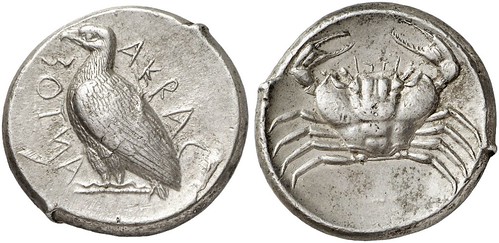
Lot 24: ACRAGAS (Sicily). Tetradrachm, ca. 460-450/446. Extremely fine. Estimate: 20,000,- euros
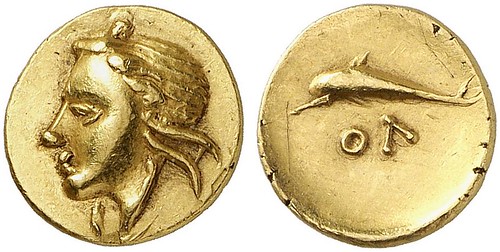
Lot 59: OLBIA (Sarmatia). Quarter stater, ca. 360-320. Extremely fine. Estimate: 6,000,- euros
Lot 64: APOLLONIA PONTICA (Thrace). Tetradrachm, 400-350. Extremely fine. Estimate: 15,000,- euros
Lot 81: AENEA (Macedonia). Tetradrachm, mid-4th cent. Almost extremely fine. Estimate: 12,000,- euros
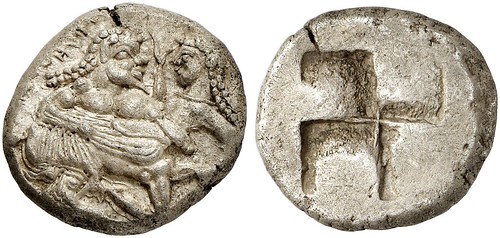
Lot 111: ORRESCII (Macedonia). Stater, ca. 500-480. Extremely fine. Estimate: 22,000,- euros
Lot 166: EPIRUS. Pyrrhus, 297-272. Tetradrachm, Locroi Epizephyrioi. Extremely fine. Estimate: 20,000,- euros
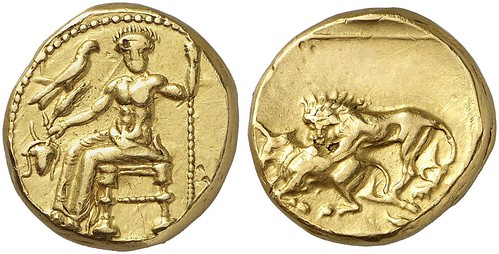
Lot 270: BABYLON. Mazaeus, 331-328. Double daric. Very fine. Estimate: 15,000,- euros
Lot 285: SASANIDS. Vahram I, 273-276. Dinar, Ctesiphon. Almost extremely fine. Estimate: 18,000,- euros
Lot 303: KUSHAN. Huviska, 151-190. Dinar. Extremely fine to FDC. Estimate: 10,000,- euros
Lot 344: PERGAMON (Mysia). Septimius Severus and Iulia Domna, 193-211. AE- medallion. Rv: detailed depiction of sacrifice in front of the emperor’s statue. Extremely fine. Estimate: 1,500,- euros
Lot 469: TITUS, 79-81. Sestertius, 80-81, Rome. Av.: Colosseum. Very fine. Estimate: 60,000,- euros
Lot 472: DOMITIAN, 81-96. Aureus, 90-91, Rome. Rv: Germania. Extremely fine. Estimate: 20,000,- euros
Lot 509: ANTONINUS PIUS, 138-161. AE-medallion, after 142. Very fine. Estimate: 12,500,- euros
Lot 527: PERTINAX, 192-193. Aureus, 193, Rome. Extremely fine. Estimate: 40,000,- euros
Lot 532: SEPTIMIUS SEVERUS, 193-211. Aureus, after 210, Rome. FDC. Estimate: 50,000,- euros
Lot 534: SEPTIMIUS SEVERUS, 193-211. As, 208, Rome. Rv: Tiber bridge. Extremely fine. Estimate: 15,000,- euros
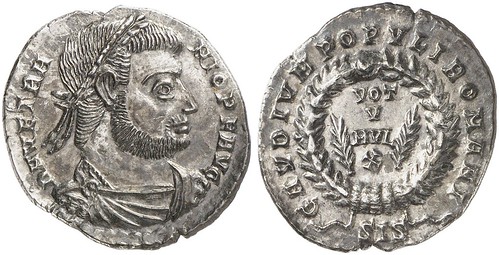
Lot 584: VETRANIO, 350. Heavy miliarense, Siscia. Extremely fine. Estimate: 20,000,- euros
Lot 624: EIRENE, 797-802. Solidus, Syracuse. FDC. Estimate: 5,000,- euros
Lot 1088: IMITATION. After Eirene, 797-802. “Solidus”, unknown mint. Very fine. Estimate: 250,- euros
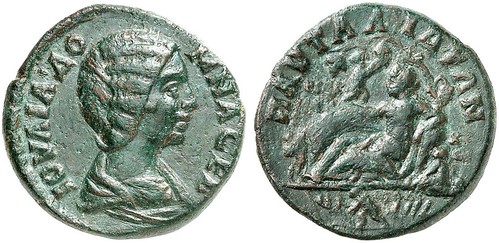
Lot 1789: PAUTALIA (Thrace). Iulia Domna. AE. Rv: the wealth of the city of Pautalia. Good very fine. Estimate: 400,- euros
Lot 4003: ARNSTEIN. Walter II, 1135-1176. Bracteate. Very rare. Very fine to extremely fine. Estimate: 600,- euros
Lot 4129: SICILY. Frederick II, 1197-1220- 1250. Augustalis no date, Messina. Very rare. Very fine. Estimate: 7,500,- euros
Lot 4189: BAVARIA. Maximilian I, 1598-1651. Taler 1627, Heidelberg. Extremely rare. Very fine. Estimate: 5,500,- euros
Lot 4315: BAVARIA. Maximilian II, 1848-1864. Double taler 1859, Munich. Graded NGC PF65. Proof. Estimate: 10,000,- euros
Lot 4344: BRUNSWICK-WOLFENBÜTTEL. Henry Julius, 1589-1613. Löser of 10 taler 1609. Very rare. Very fine to extremely fine. Estimate: 25,000,- euros
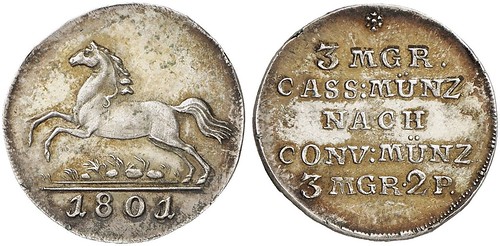
Lot 4364: BRUNSWICK-CELLE / CALENBERG. George III, 1760-1820. 3 mariengroschen CASSA-coin 1801. Extremely rare. Extremely fine to FDC. Estimate: 5,000,- euros
Lot 4500: REGENSBURG. 4 ducats 1664. Extremely rare. Almost FDC. Estimate: 25,000,- euros
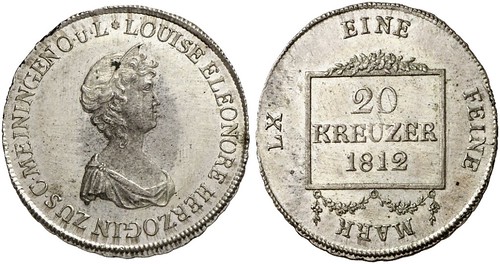
Lot 4566: SAXE-MEININGEN. Luise Eleonore as tutor. 20 kreuzer 1812, Saalfeld. Only 4 known specimens. FDC. Estimate: 12,000,- euros
Lot 4623: STOLBERG. Louis II of Königstein and Rochefort, 1535-1571. Guldentaler 1560, Augsburg. Extremely rare. Extremely fine. Estimate: 6,000,- euros
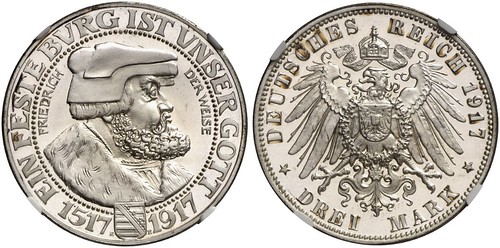
Lot 4769: GERMAN EMPIRE. Frederick August III, 1904-1918. 3 mark 1917 E. “Frederick the Wise”. Graded NGC PF66 Ultra Cameo. Probably the best known specimen. Proof. Estimate: 100,000,- euros
Lot 5092: SALZBURG. Leonhard of Keutschach, 1495-1519. Guldiner 1522. Very rare. Very fine. Estimate: 2,500,- euros
Lot 5280: MURBACH and LÜDERS. Leopold William of Austria, 1626-1662. Ducat 1651 or 1631(?), Guebwiler Mint(?). Unedited, unique. Extremely rare. Very fine. Estimate: 30,000,- euros
Lot 6009: RUSSIA. Peter I, 1682/1689-1725. 2 rubel 1720, Moscow. Very rare. Good extremely fine. Estimate: 20,000,- euros
Lot 6057: RUSSIA. Catherine II, 1762 -1796. 5 kopecks 1787 EM. Avesta coinage of Swedish King Gustav III. RR! VF-EF, Estimate 2,000,- euros
Lot 6215: RUSSIA. Alexander I, 1801-1825. Gold prize medal 1806 (the year of awarding) for a successful female graduate of Russian nobility. Estimate: 15,000,- euros
FEATURED WEB PAGE: U.S. MINT'S SEPTEMBER 11TH MEDALS
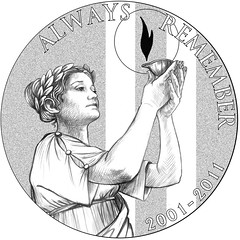
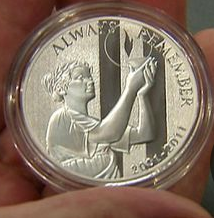
The only official medal commemorating the 10th anniversary of the September 11th terror attacks went on sale Monday. The medal's final design was unveiled by U.S. Treasurer Rosa Rios during a press conference at the 9/11 Memorial Preview Site near the World Trade Center site in New York.
"The medal we present to the American public today has been created by the United States Mint to commemorate September 11th, 2001," Ms. Rios said, "a day that changed our nation and our world forever."
The medal costs $56.95. Ten dollars from the sale of each one will go directly to the National 9/11 Memorial and Museum. If all two million medals sell out, that will generate $20 million dollars to help pay for the memorial and museum's day to day operations.
Like the troops at Pearl Harbor who dropped whatever they were doing that Sunday morning to fight the surprise attack, they became instant heroes. Only these weren't soldiers or sailors - they were ordinary people going about their ordinary business on an ordinary day, just like the people caught in the attacks in New York and at the Pentagon. But they weren't entirely helpless, and their response was extraordinary. With no weapons but their fists and whatever objects they could find, they struck back, and what they started that day was finished nearly a decade later by the professionals of Navy Seal Team 6.
But the fight goes on, and the world is still a changed place. That's what history does - changes things, sometimes forever. My kids will never know a world without airport metal detectors and baggage checks, public buildings without a perimeter of concrete barriers, or where cars can drive freely down Pennsylvania Avenue in front of The White House.
History turns observers into old people who remember the Good Old Days. I remember touring D.C. and walking up the steps of the U.S. Capitol building and entering the Rotunda - no checkpoints, no guards, no metal detectors, no nothing - just freedom. Now all I can do is tell my children stories about how life was different back then. Not that they'll listen for long. -Editor
To read the complete article, see:
U.S. MINT'S SEPTEMBER 11TH MEDALS GO ON SALE
(www.coinbooks.org/esylum_v14n26a12.html)

